
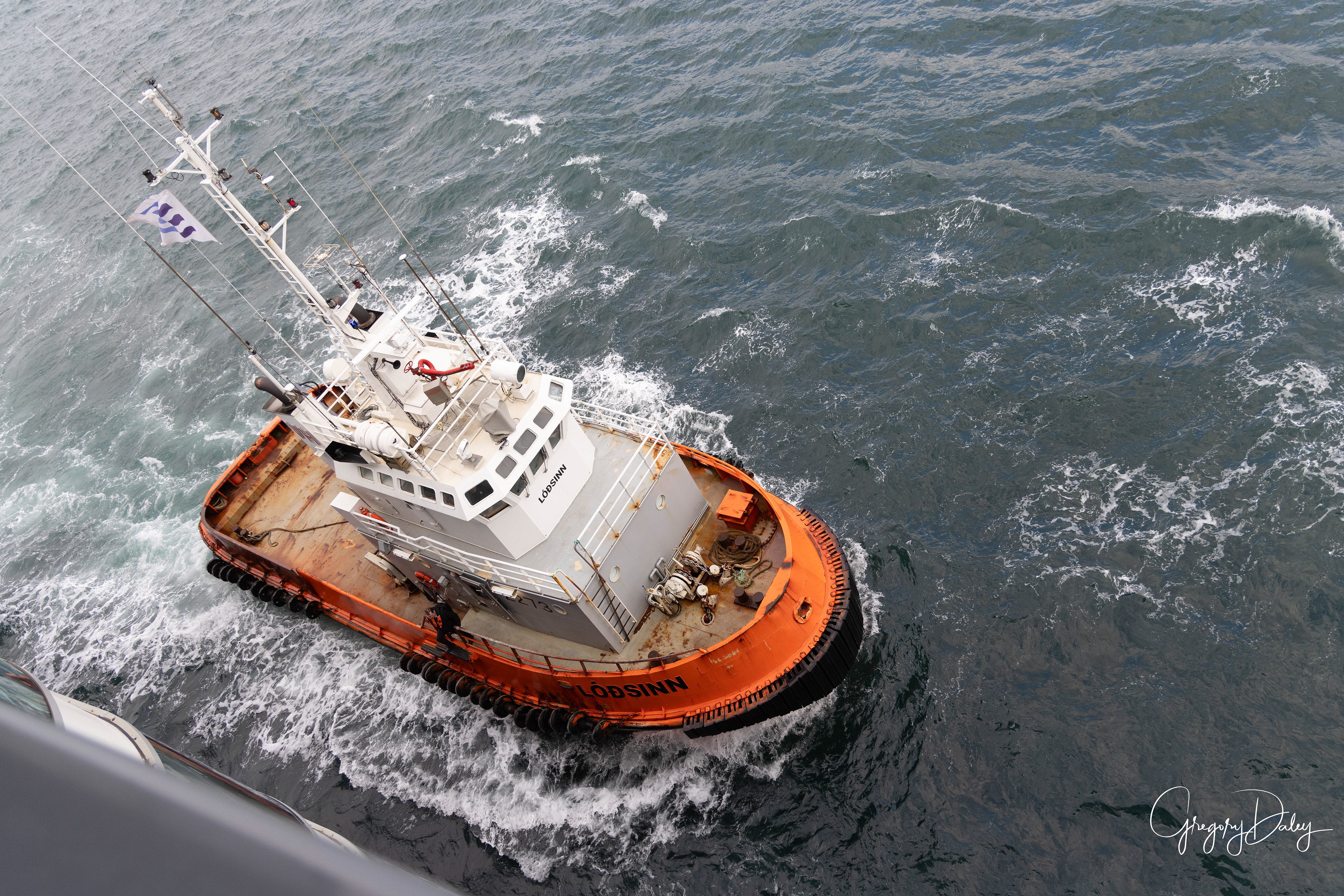

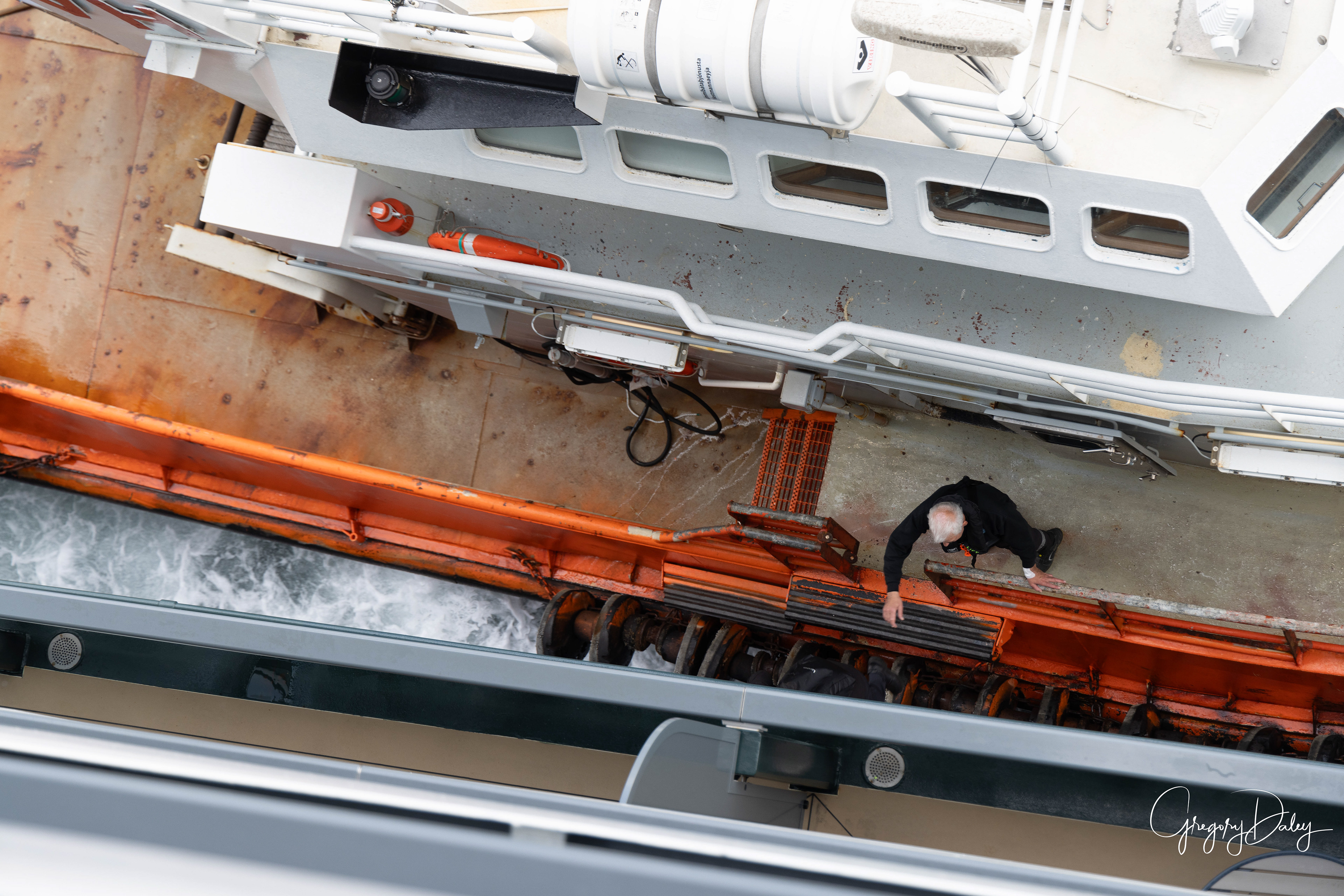
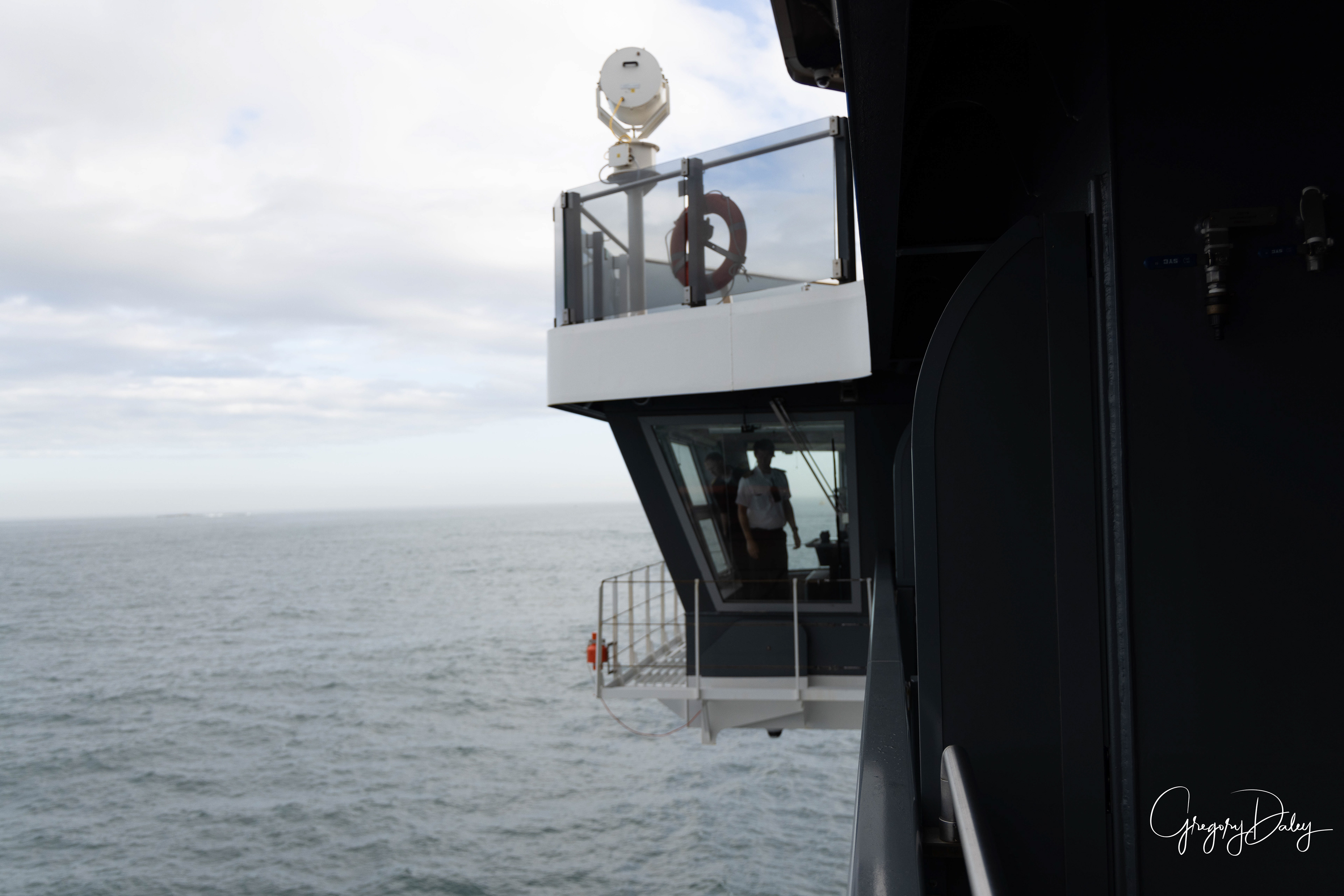
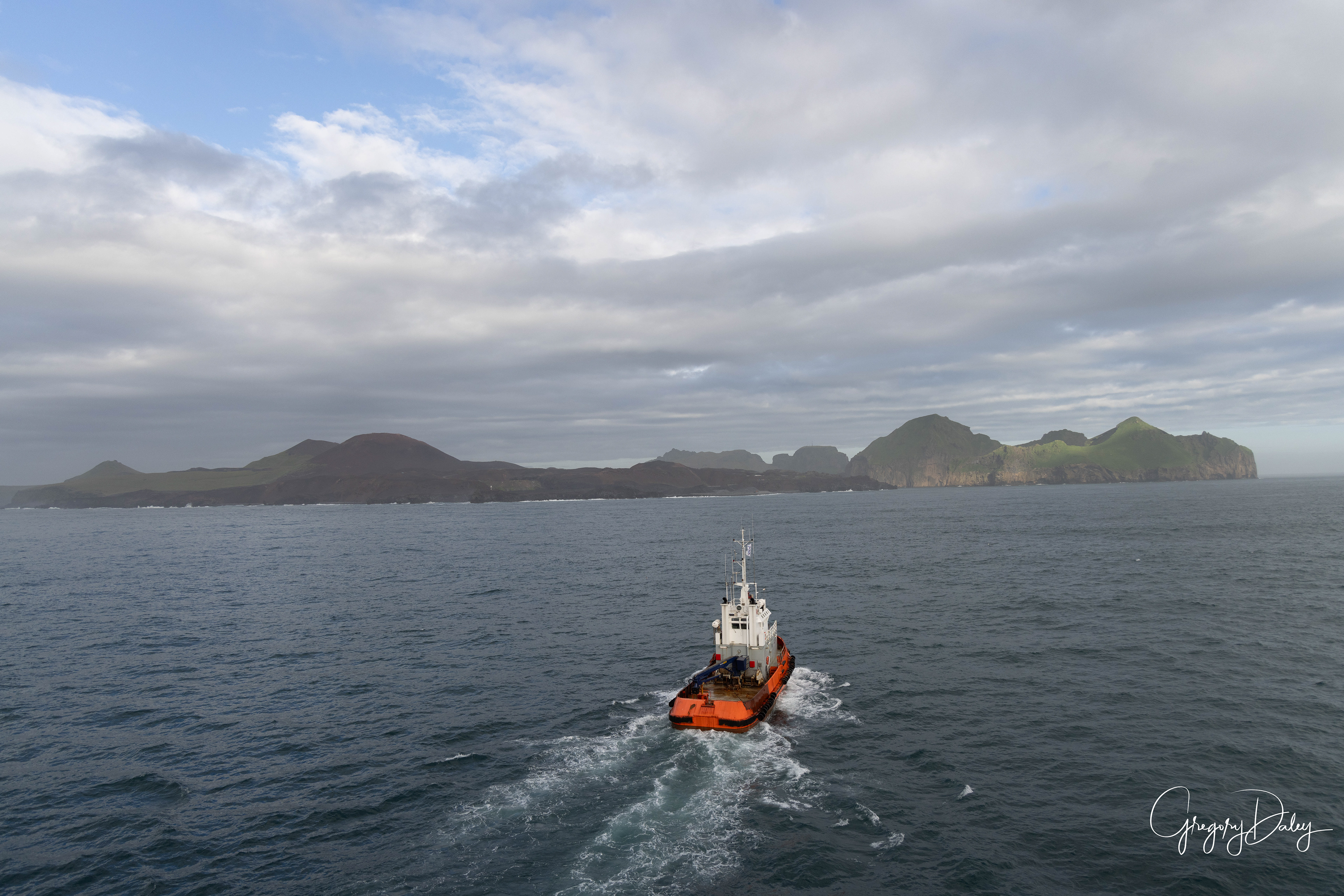
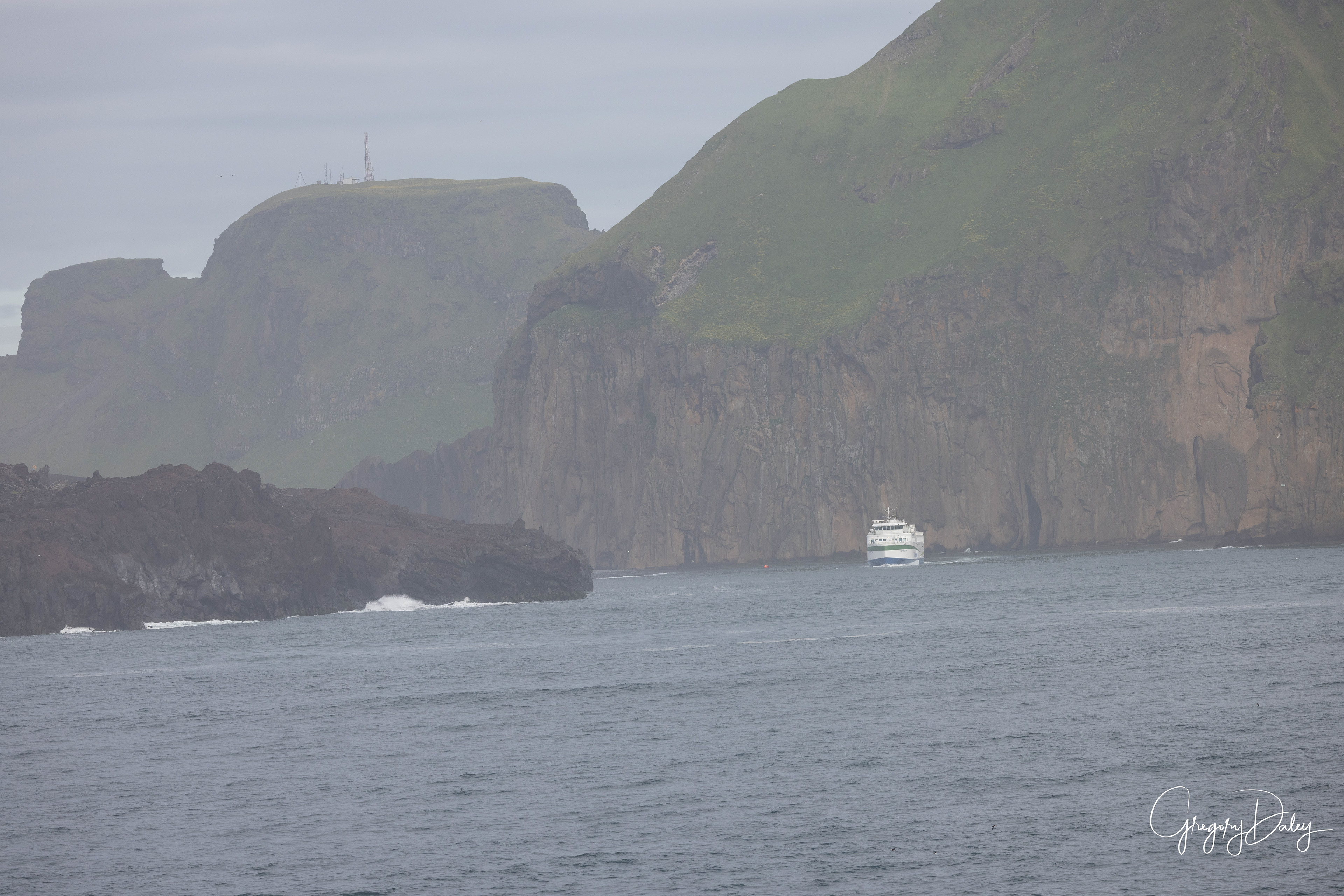
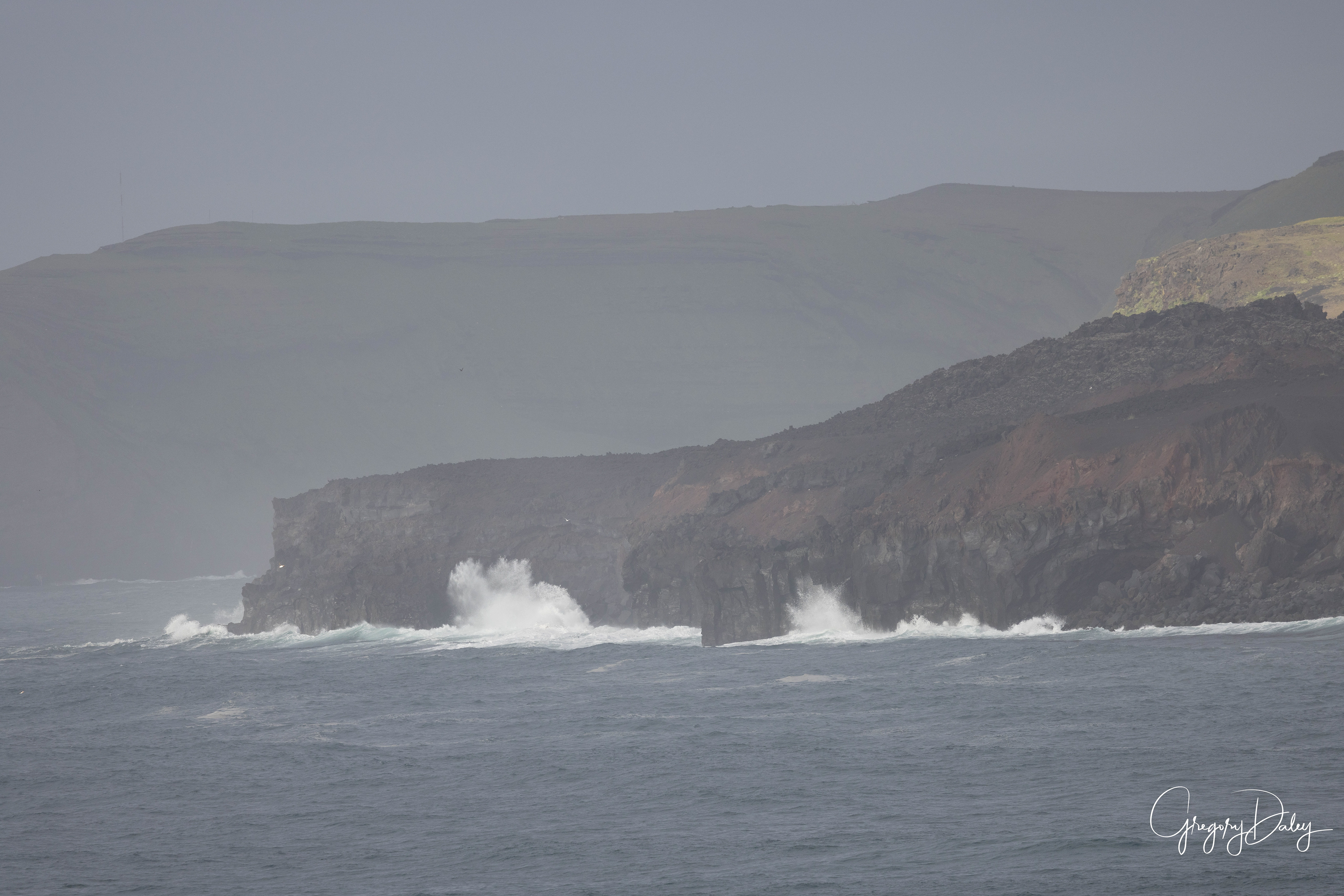



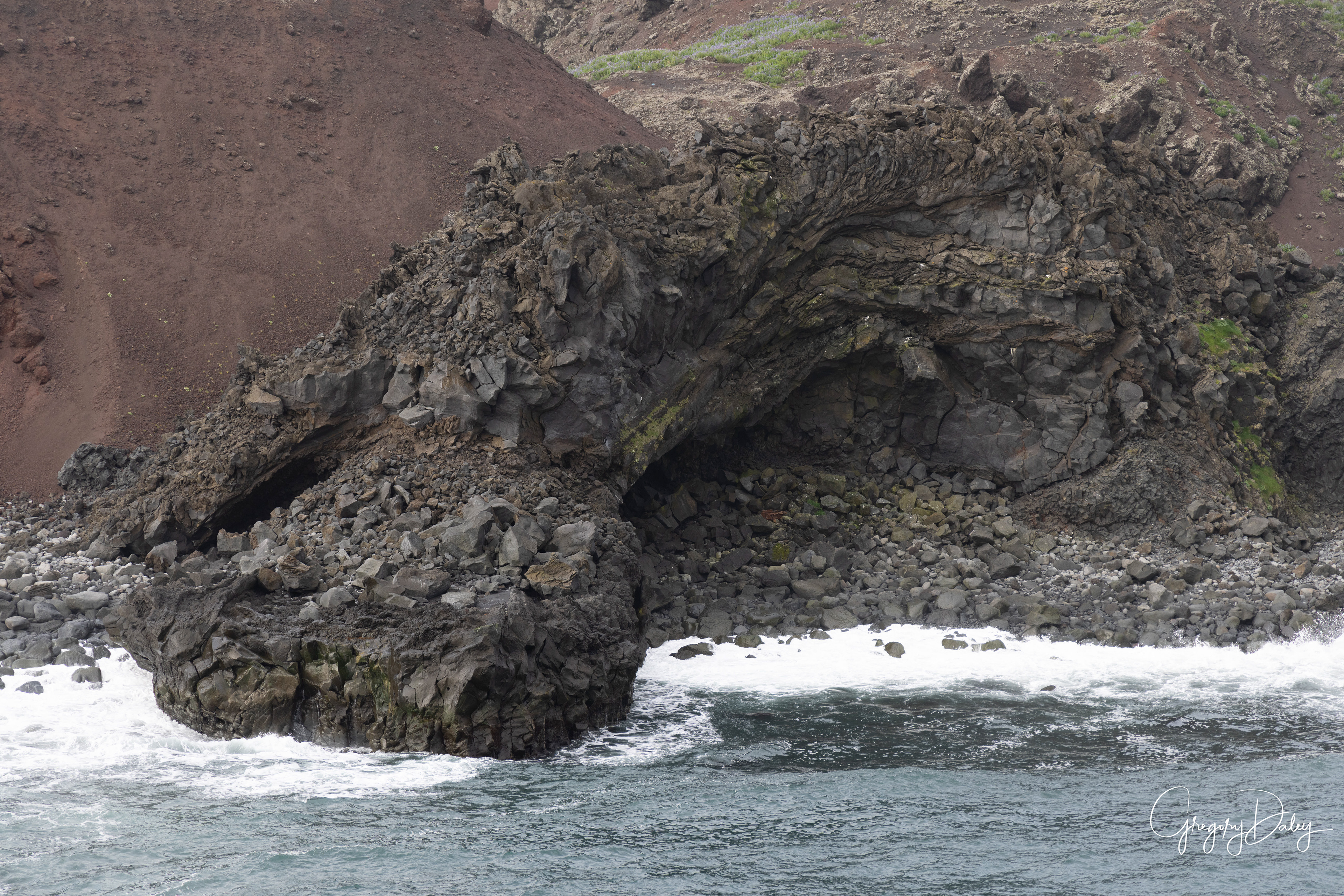
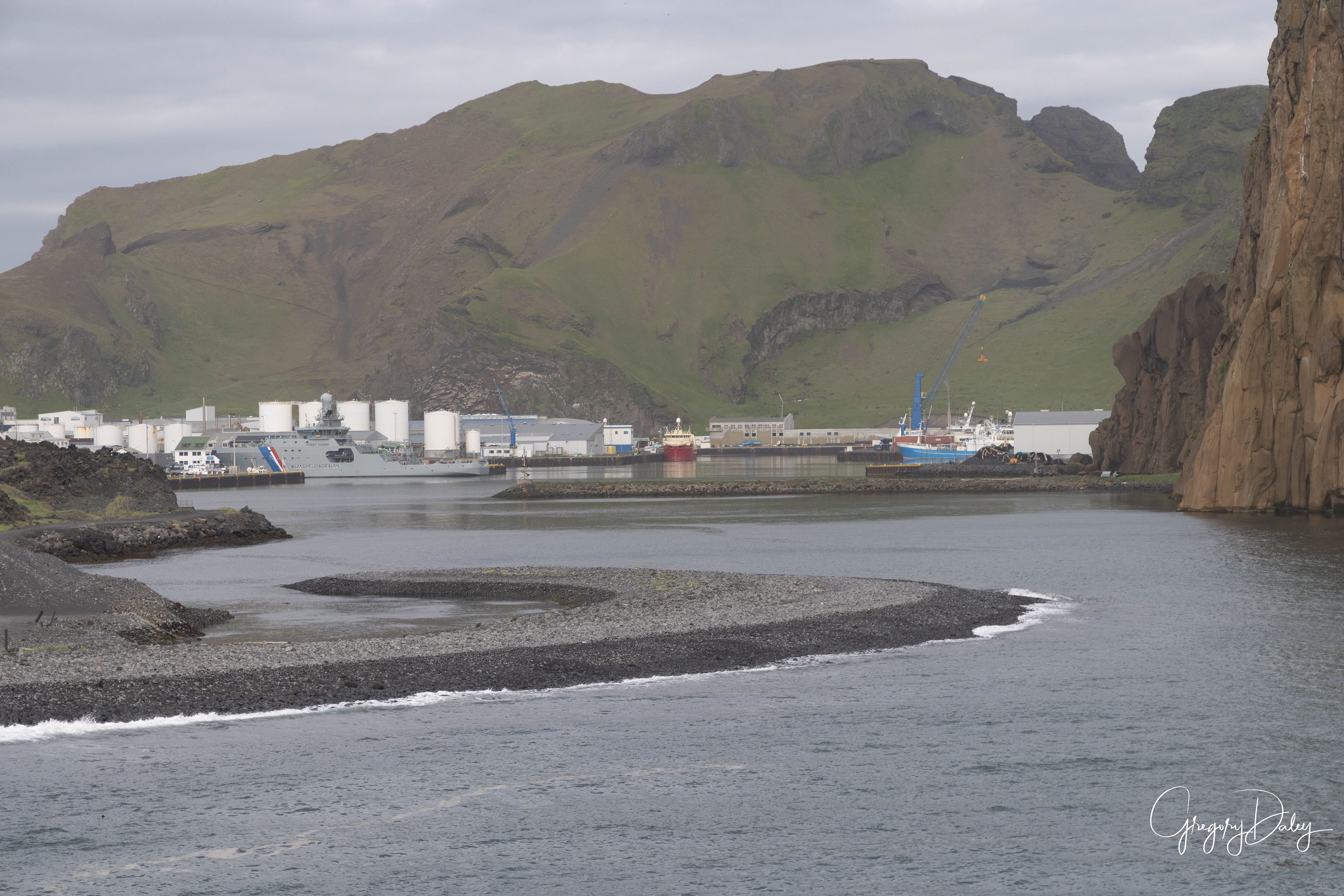



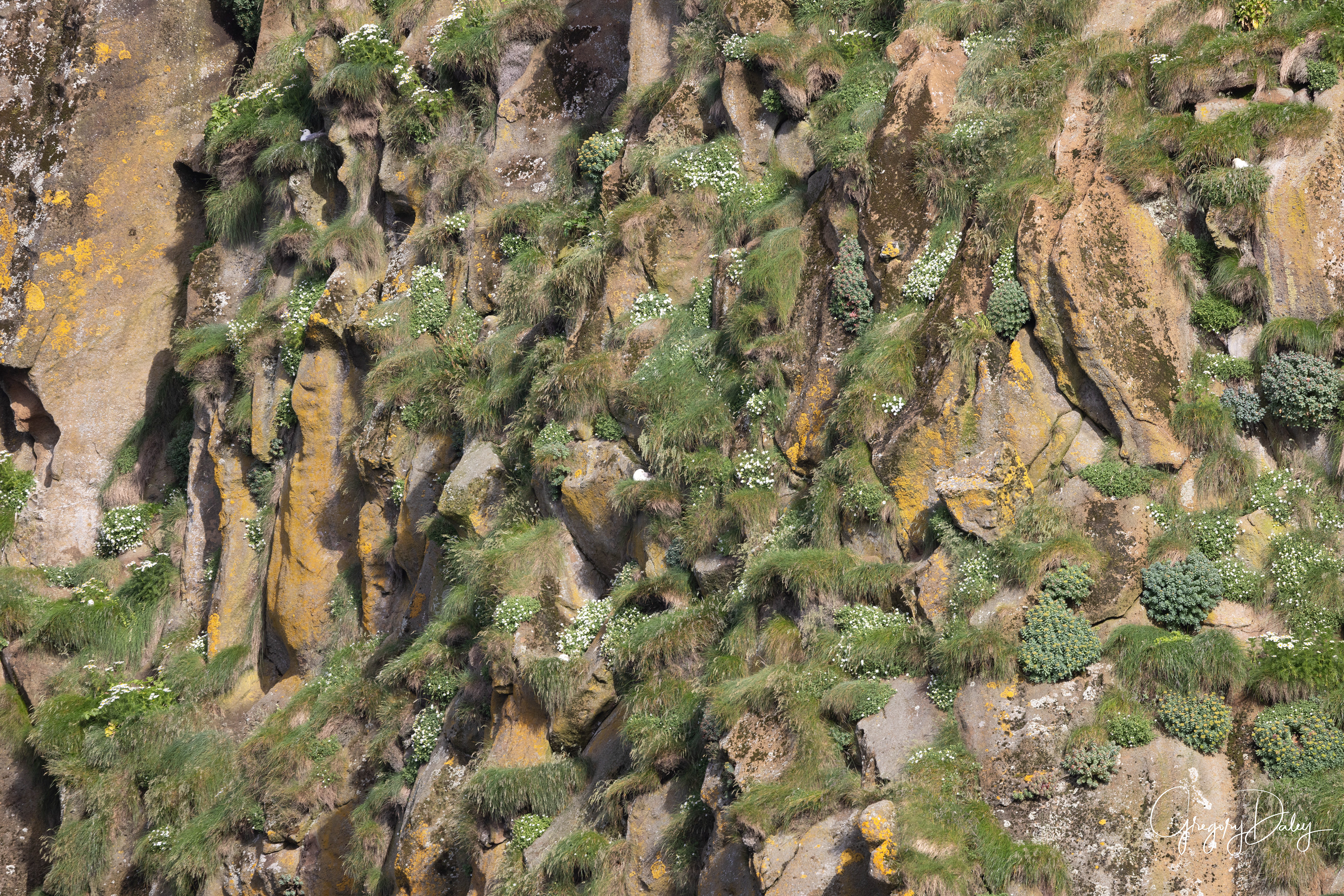
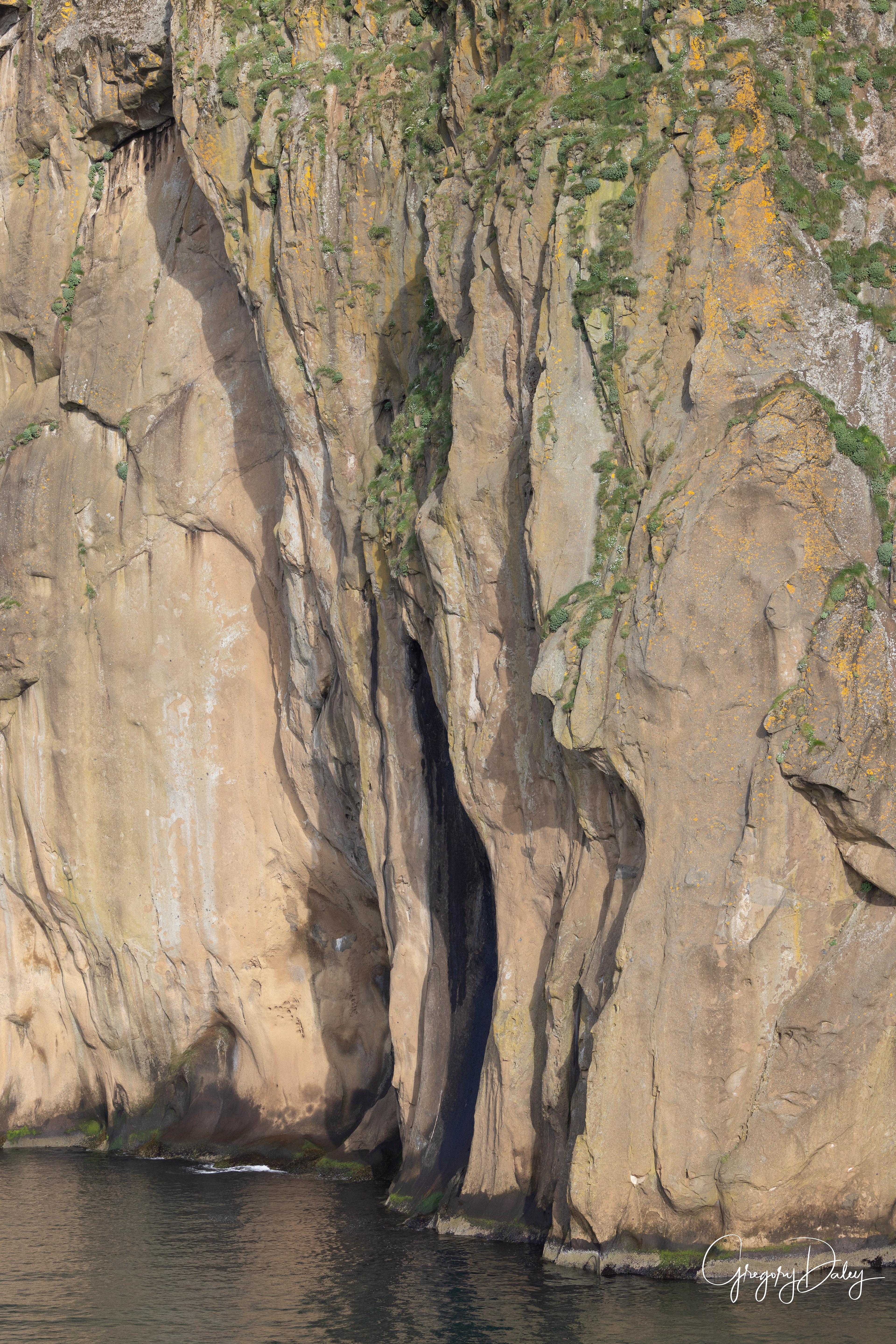

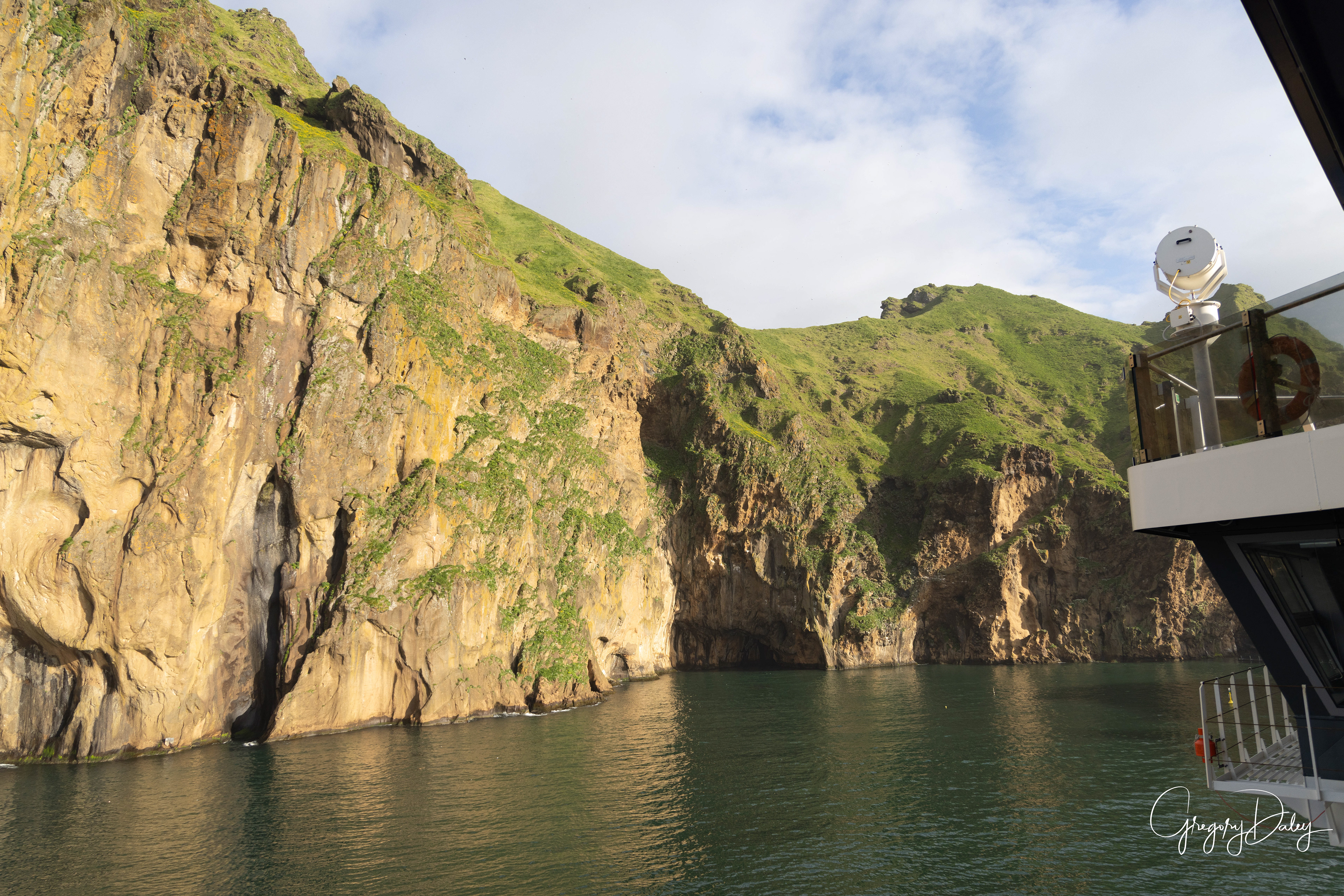




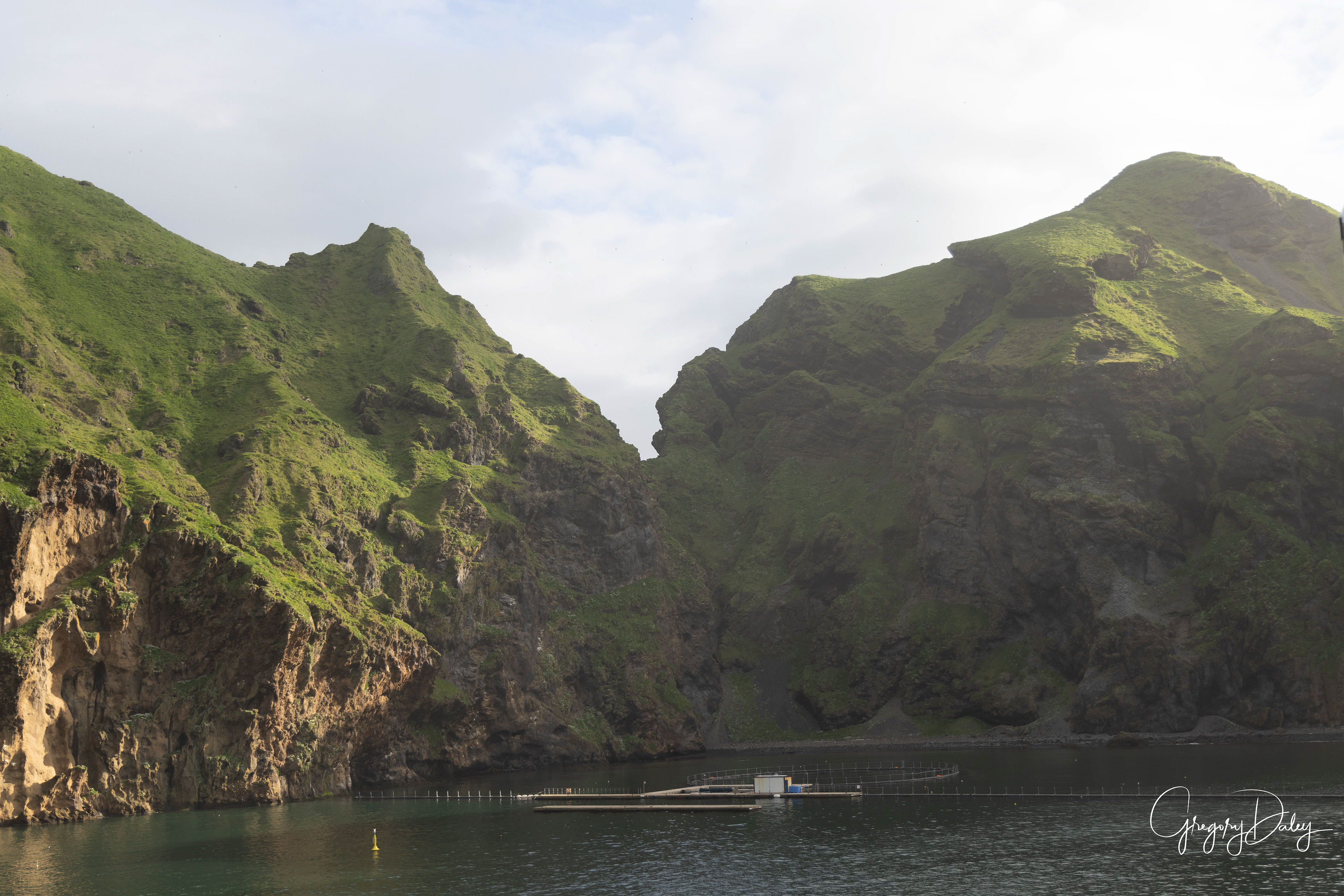
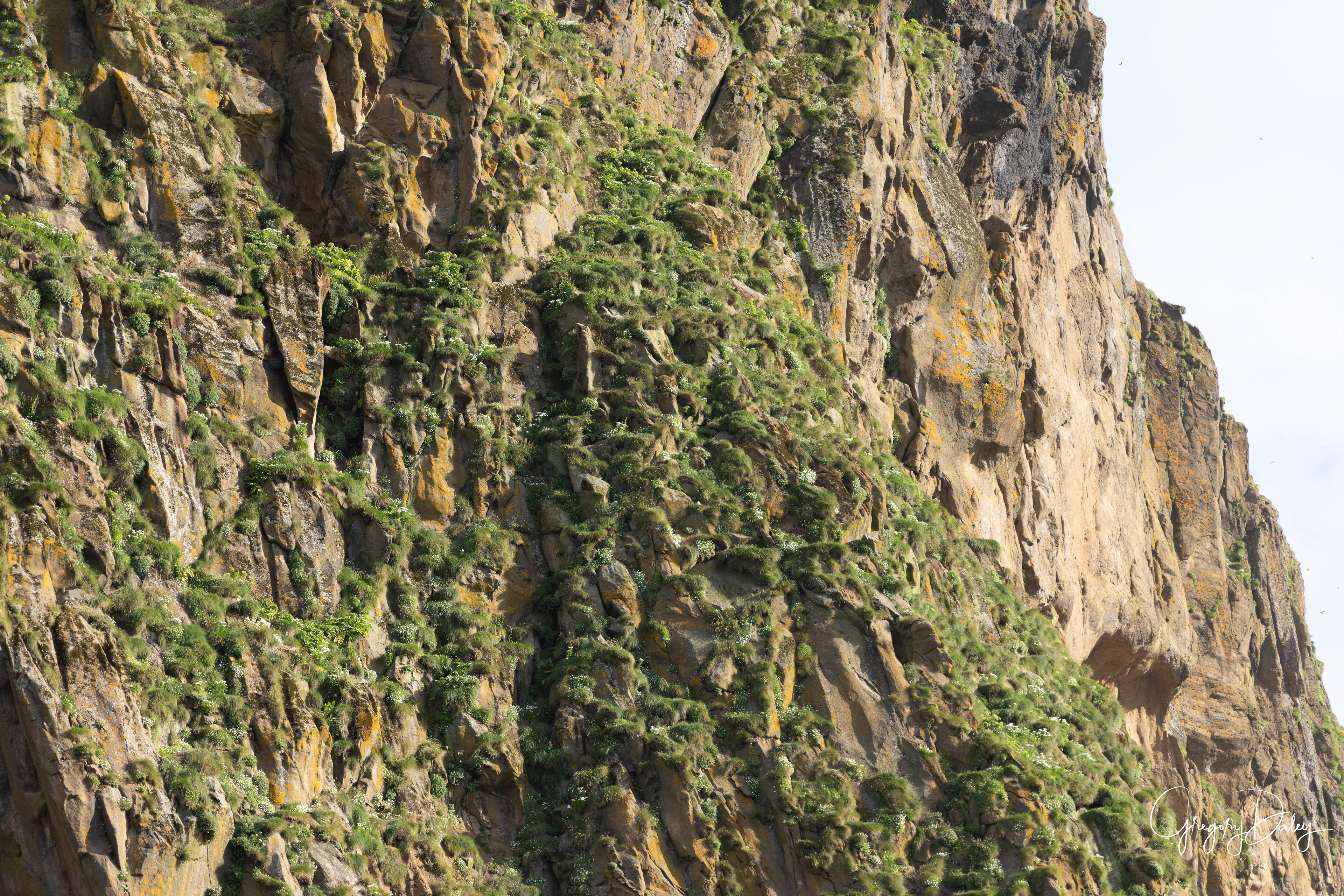
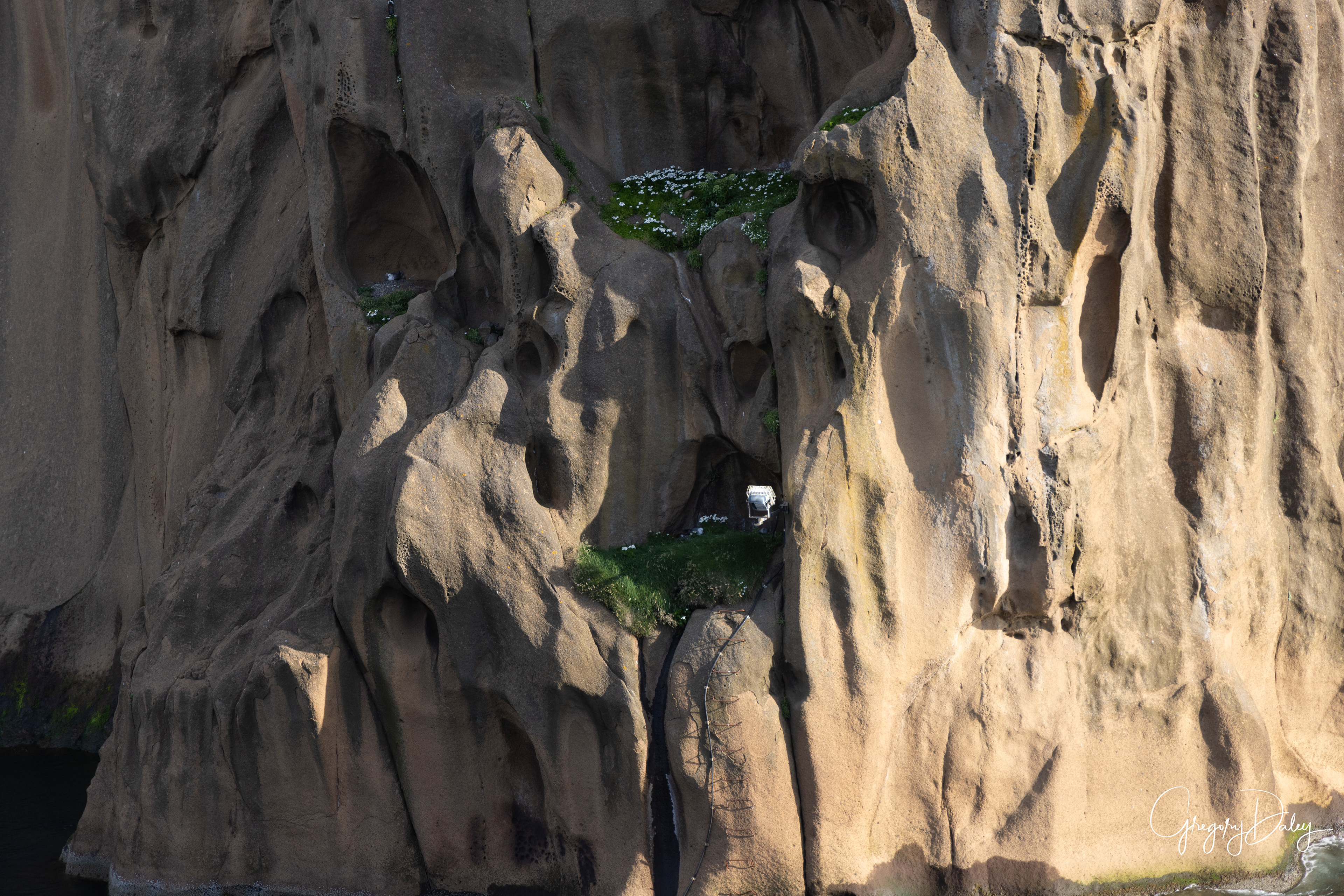
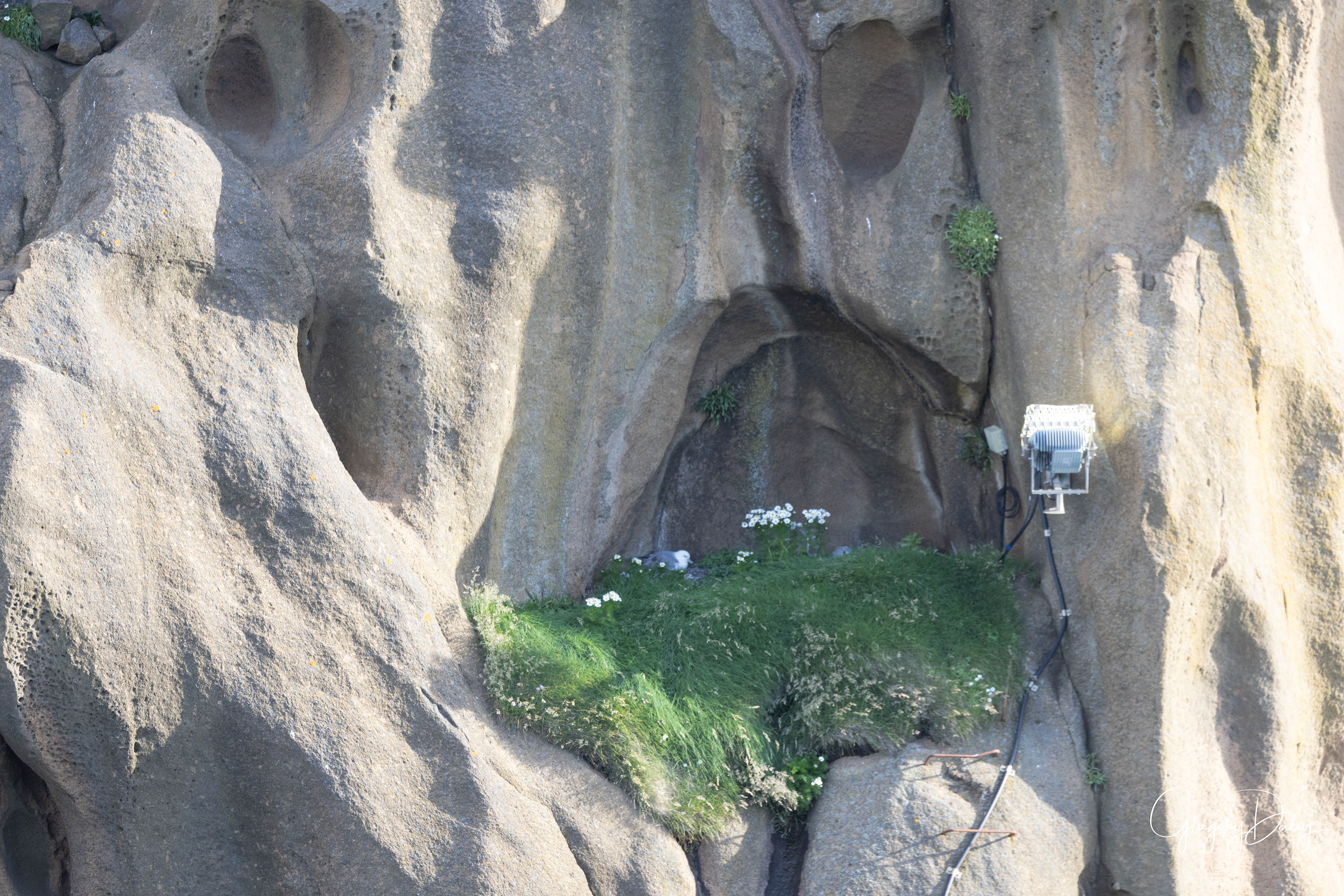
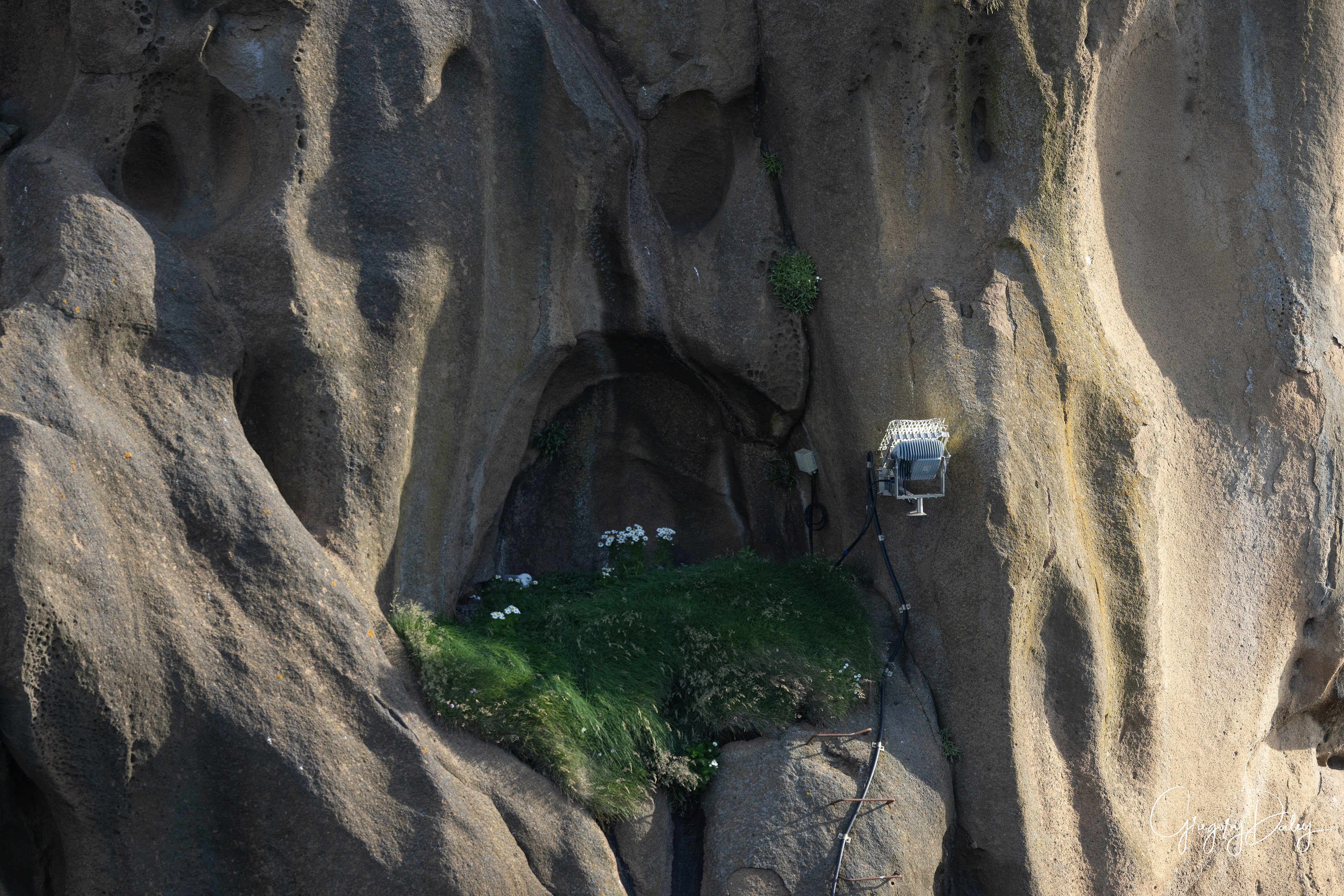
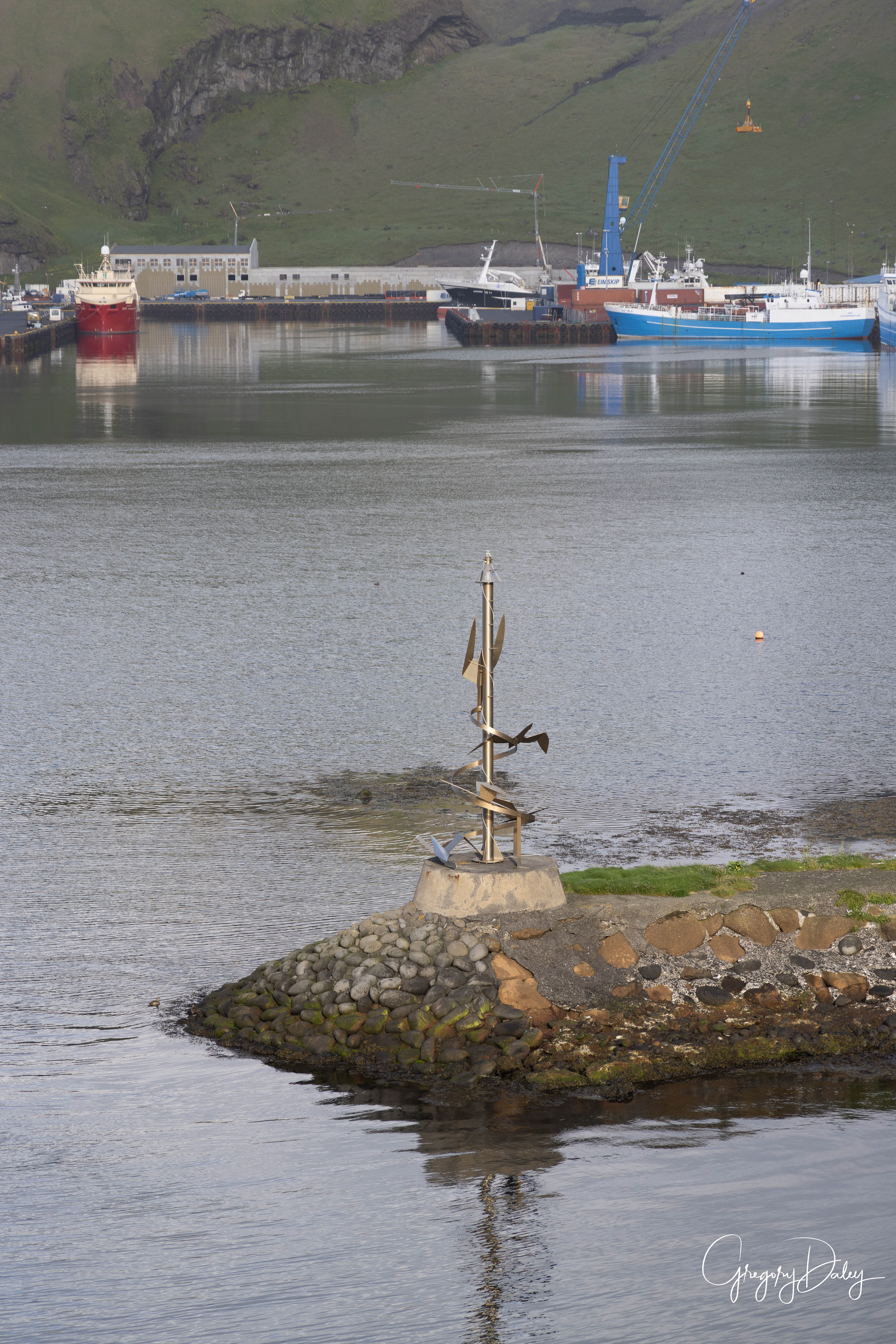



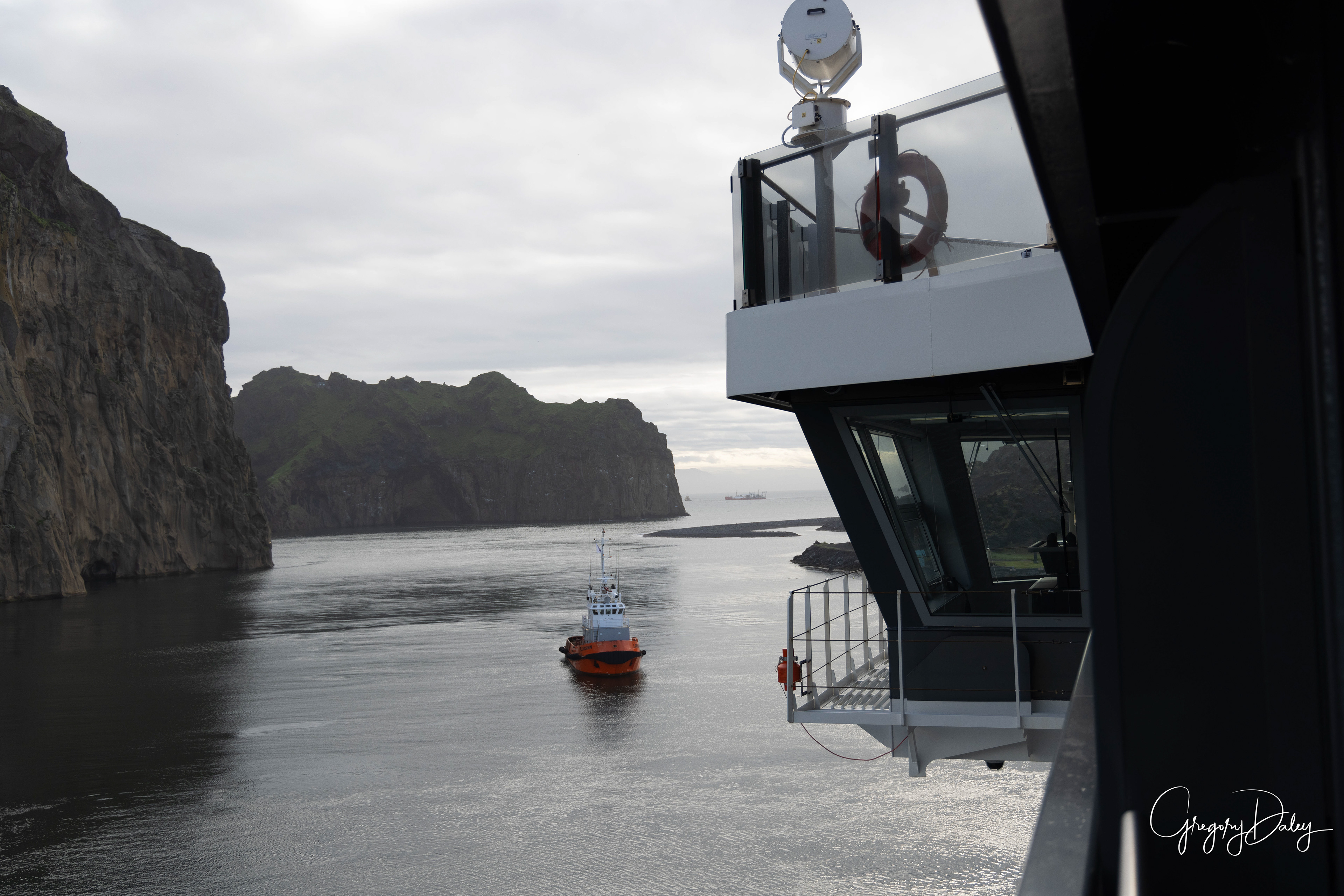

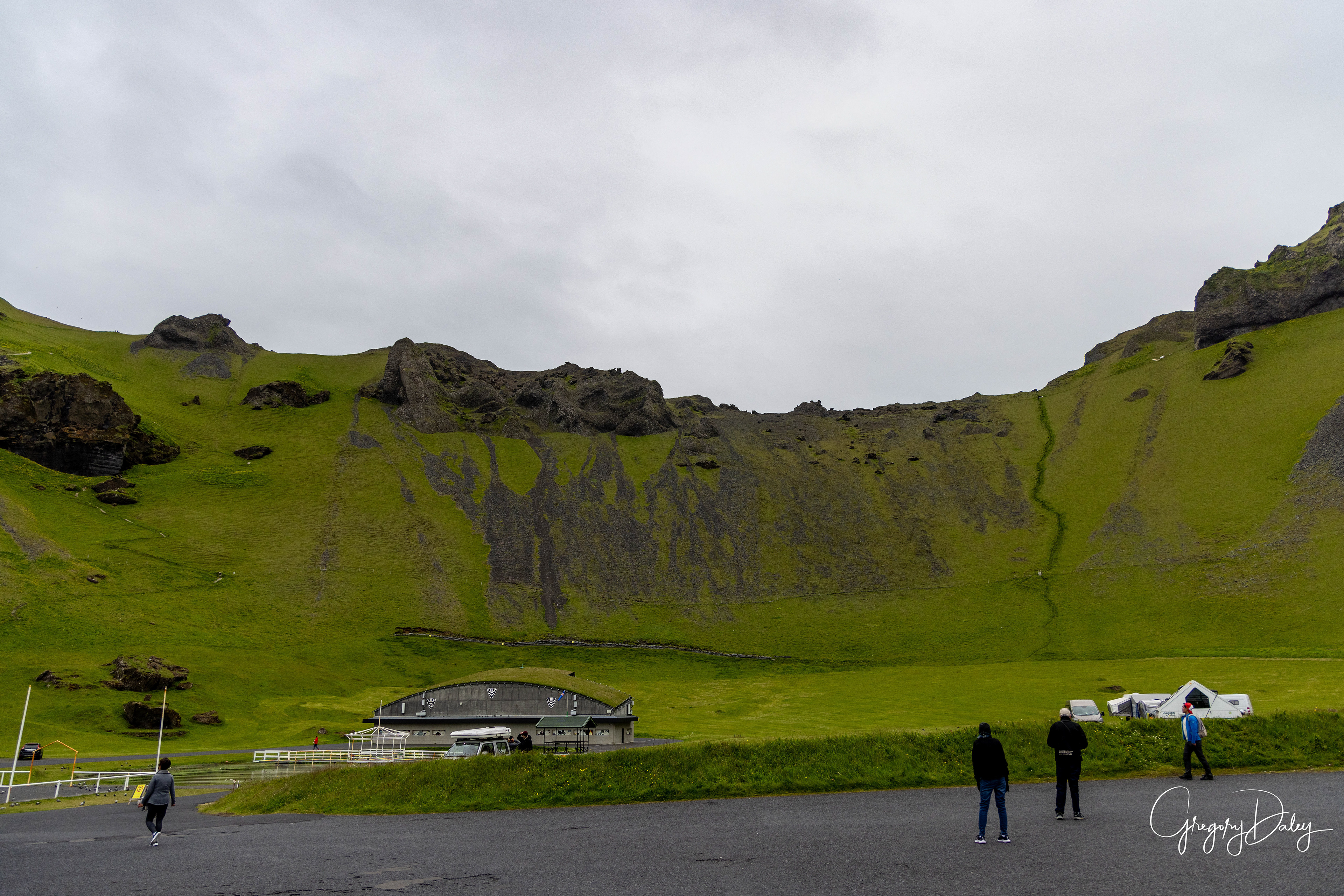



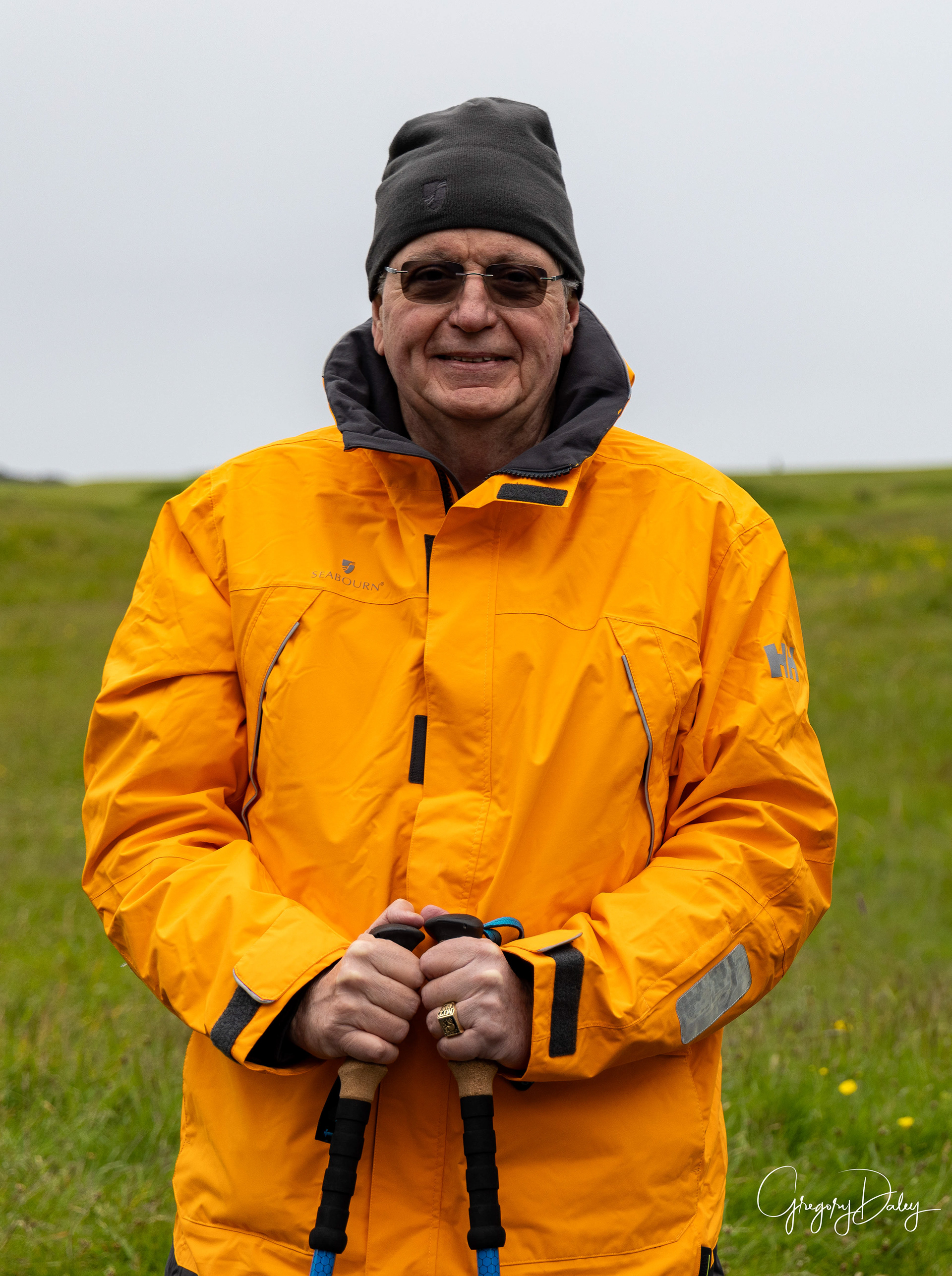
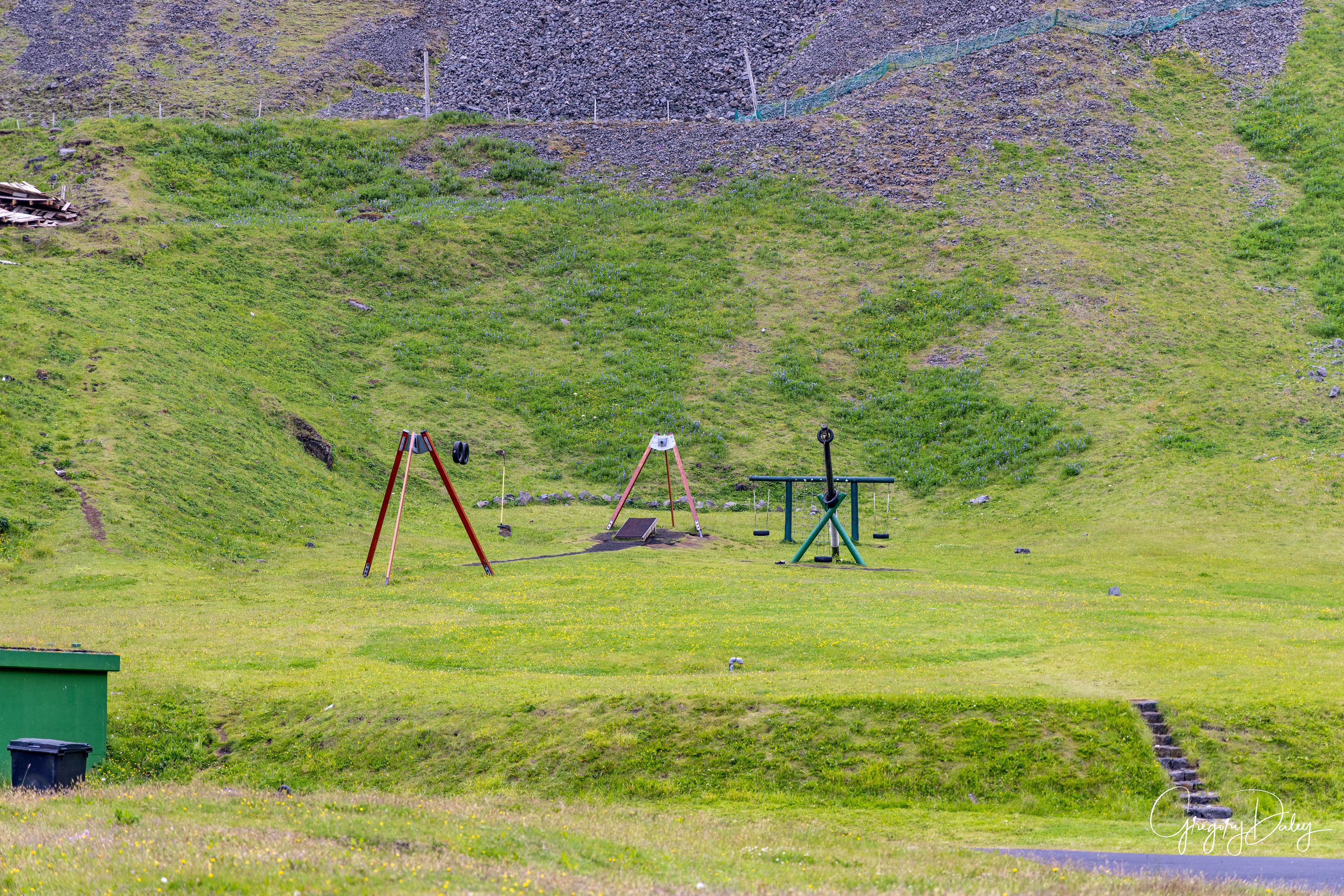
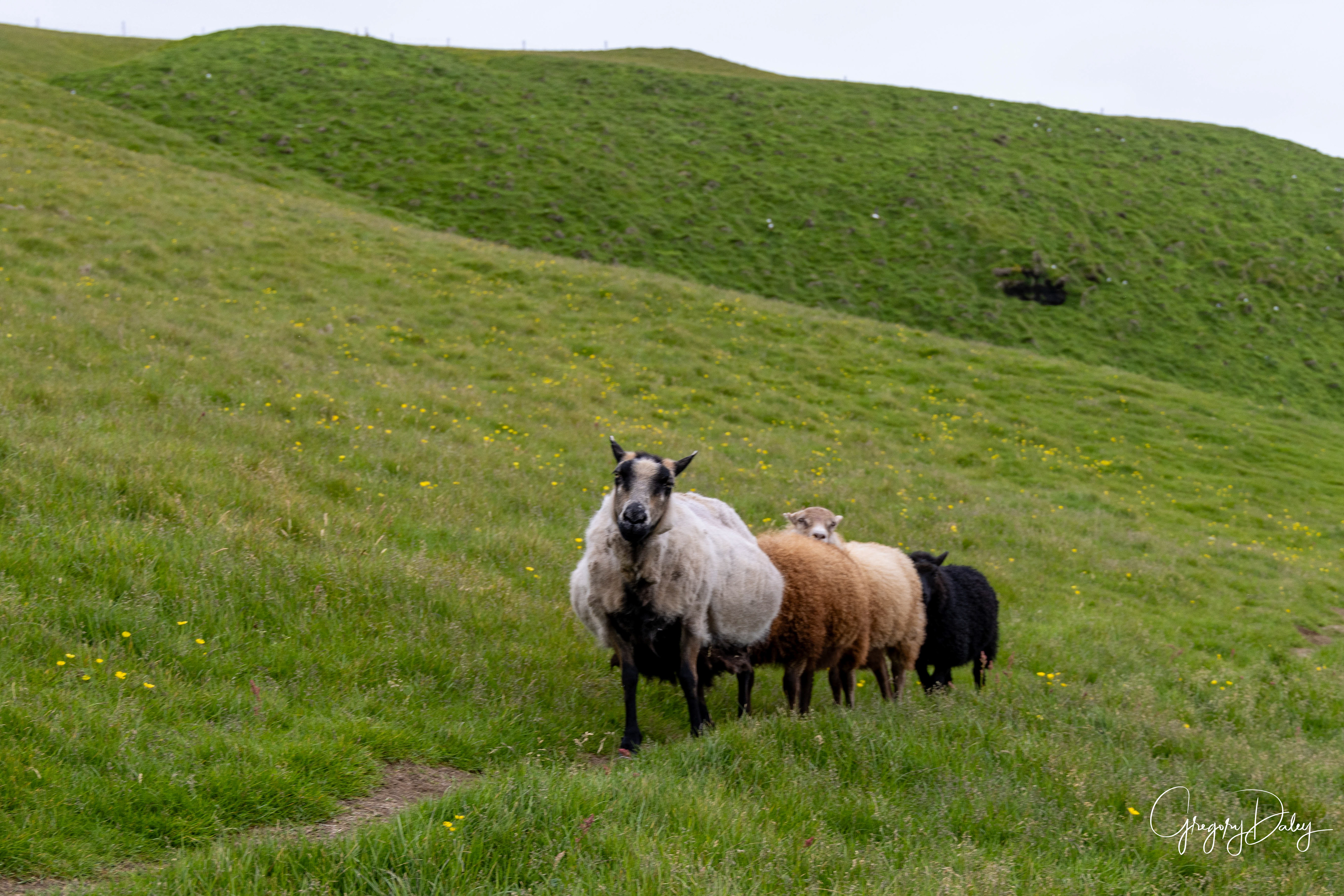
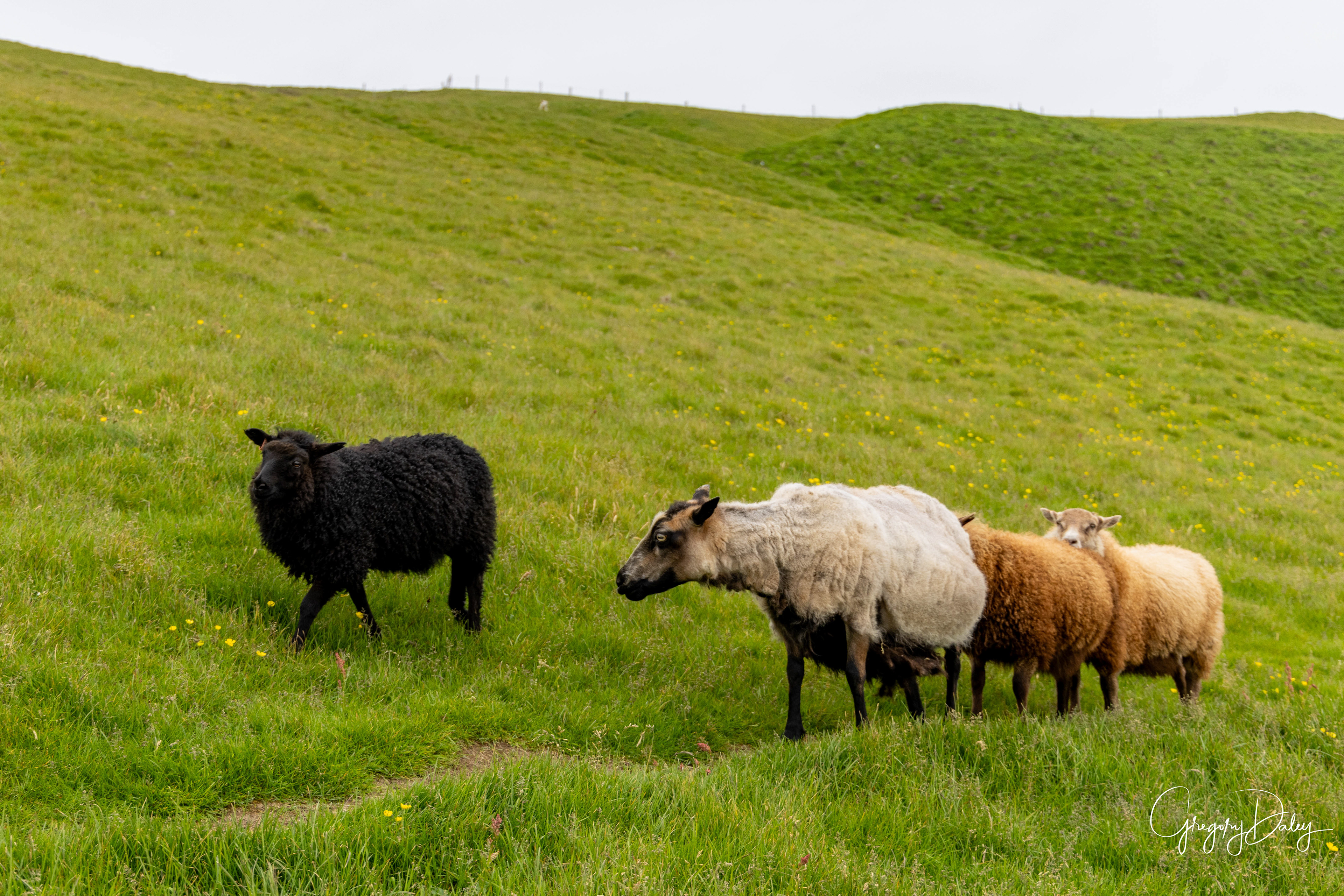
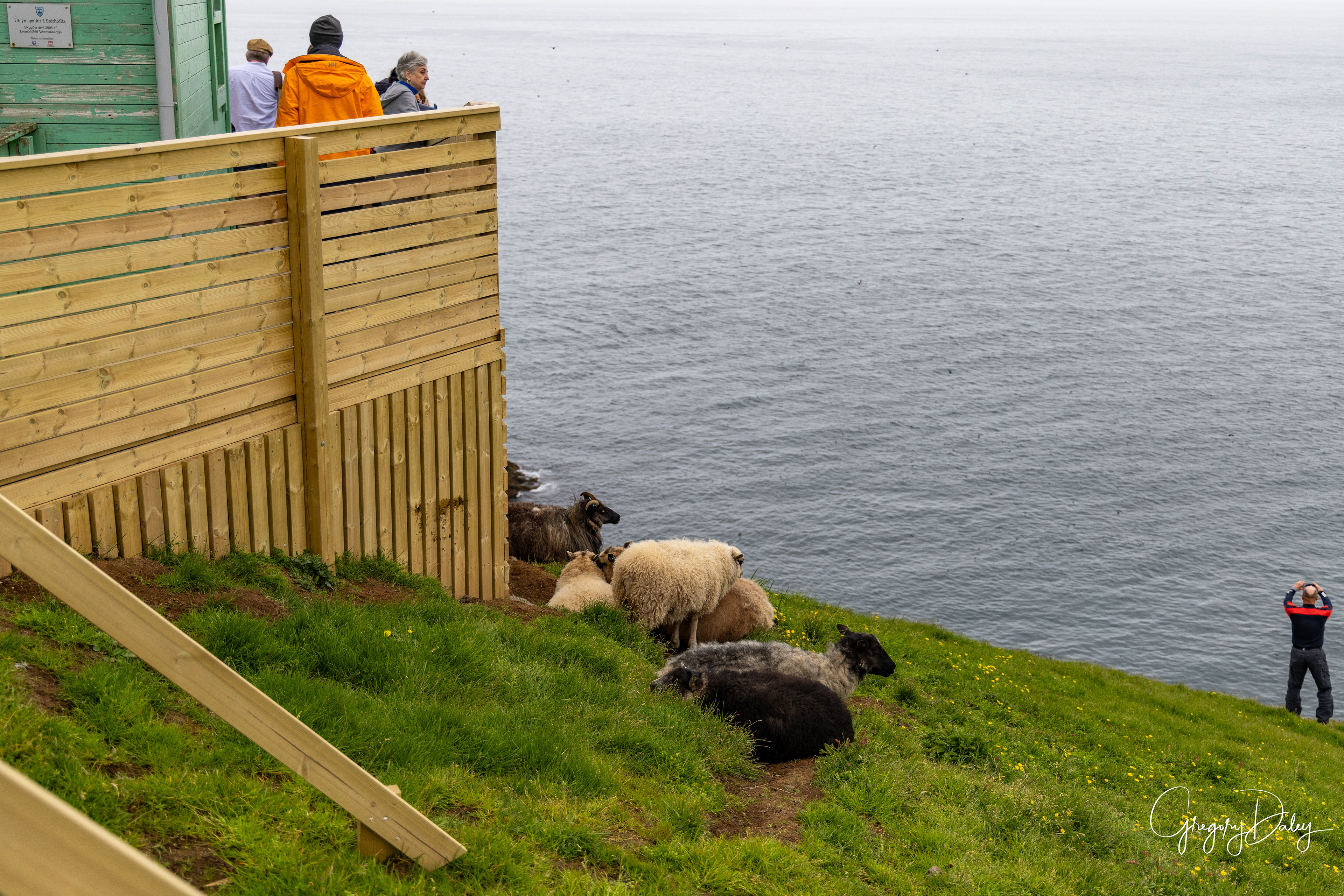
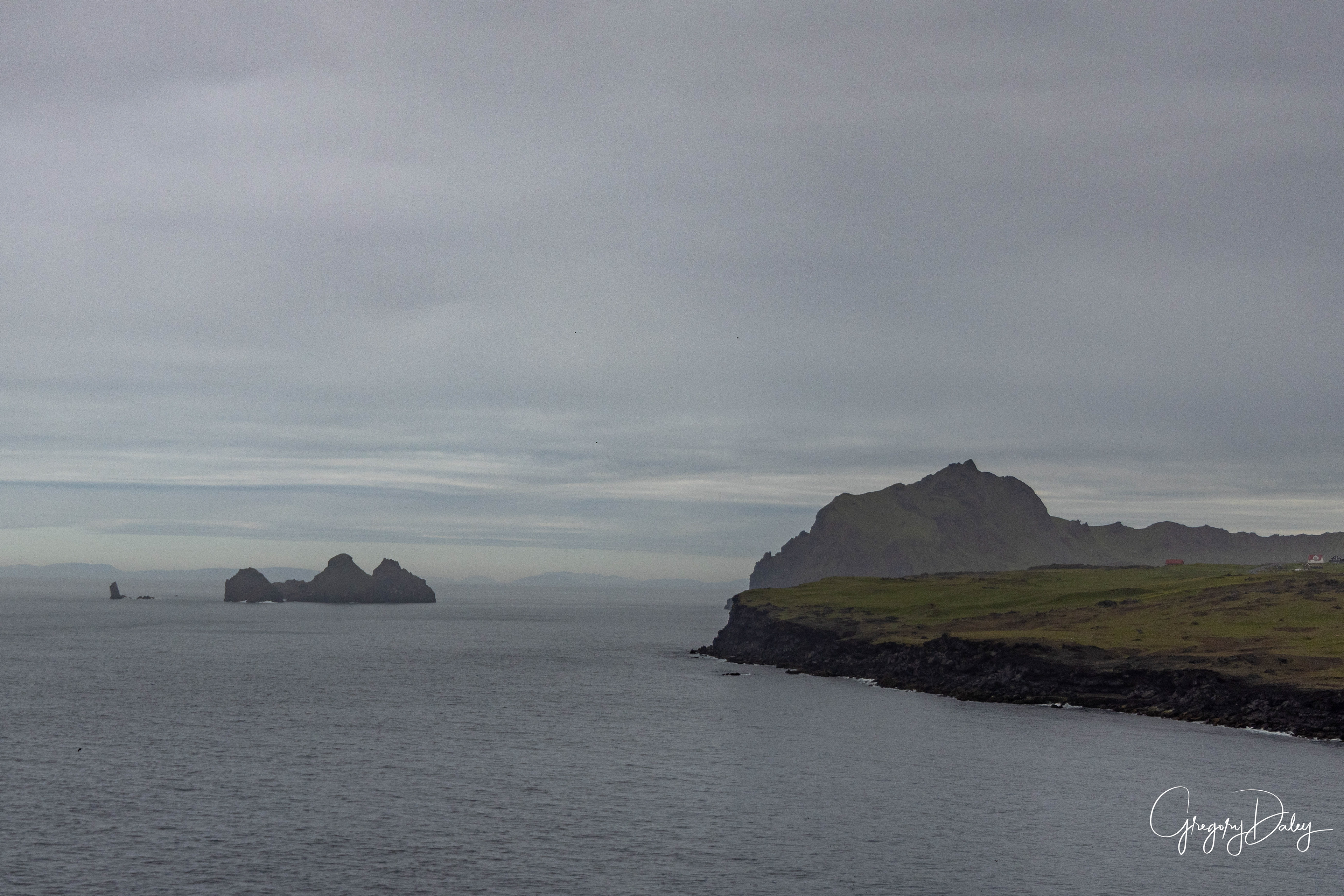

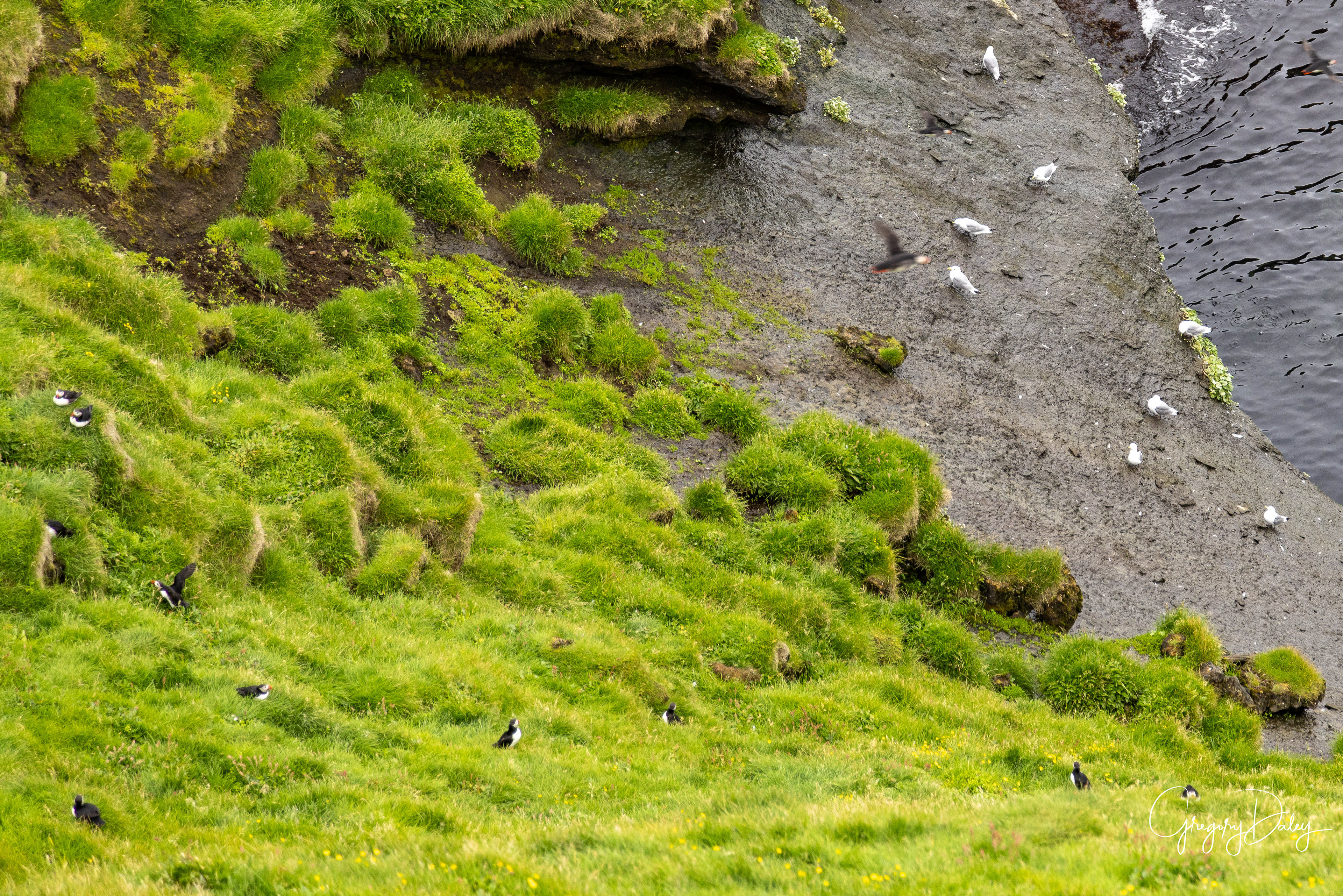


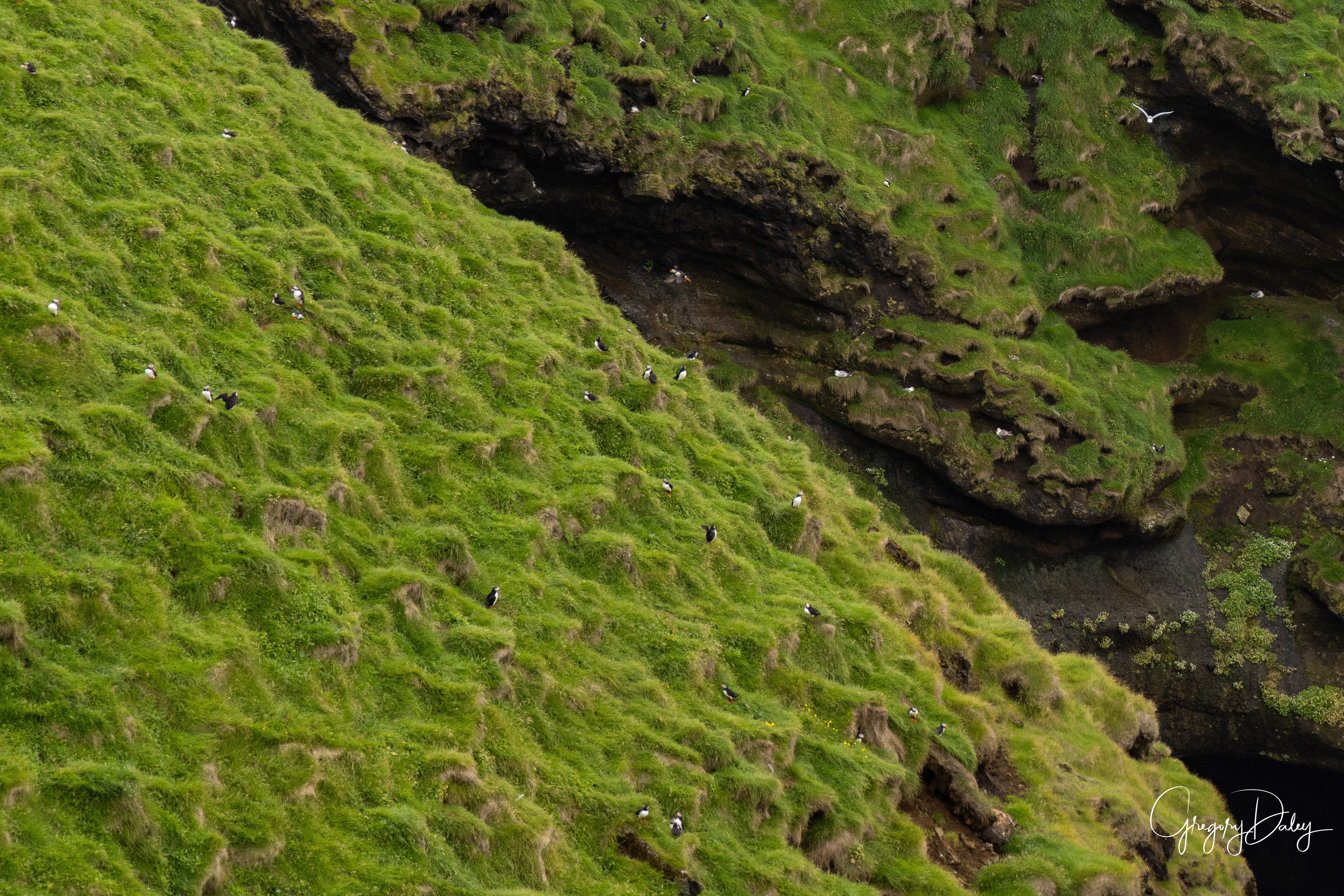
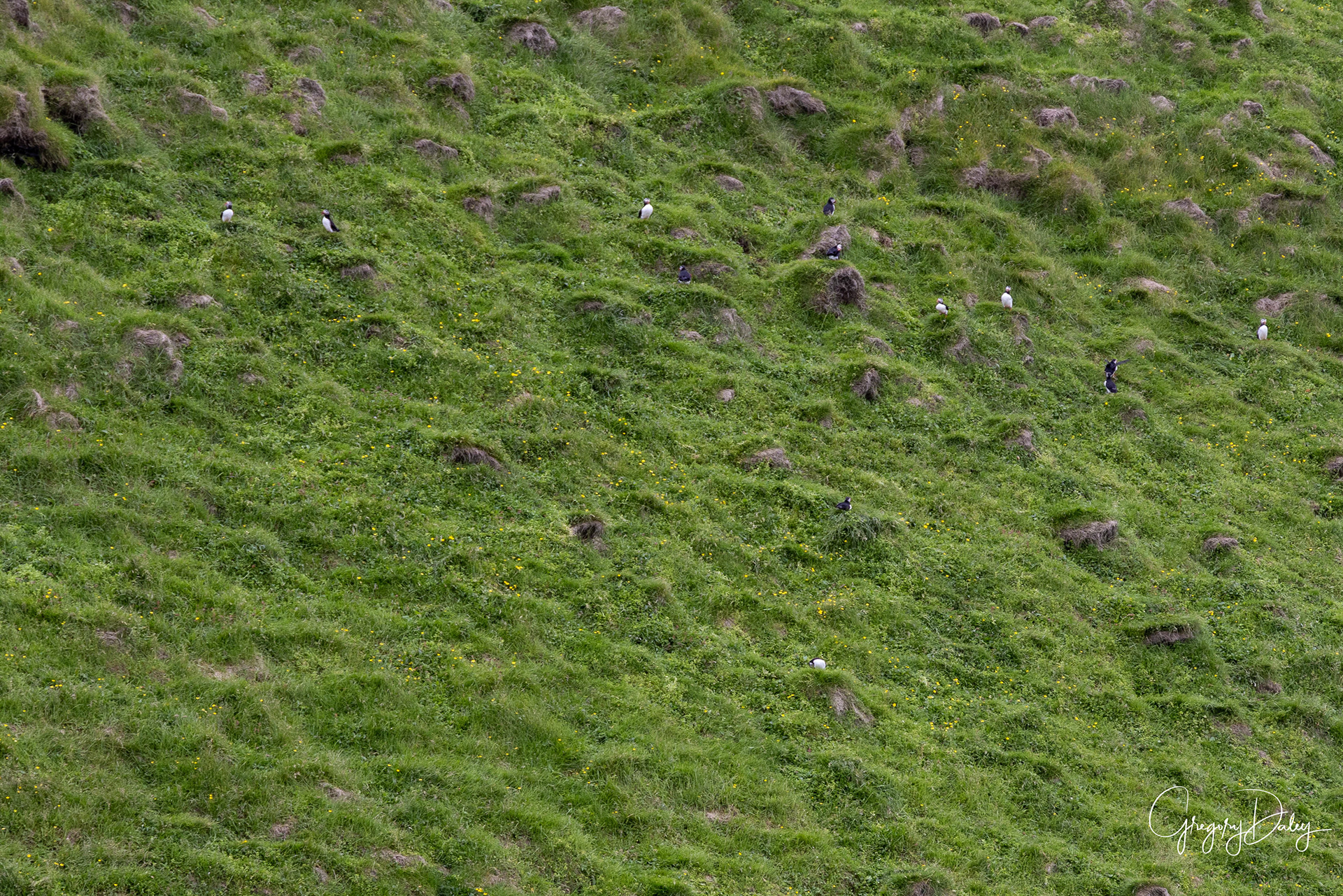
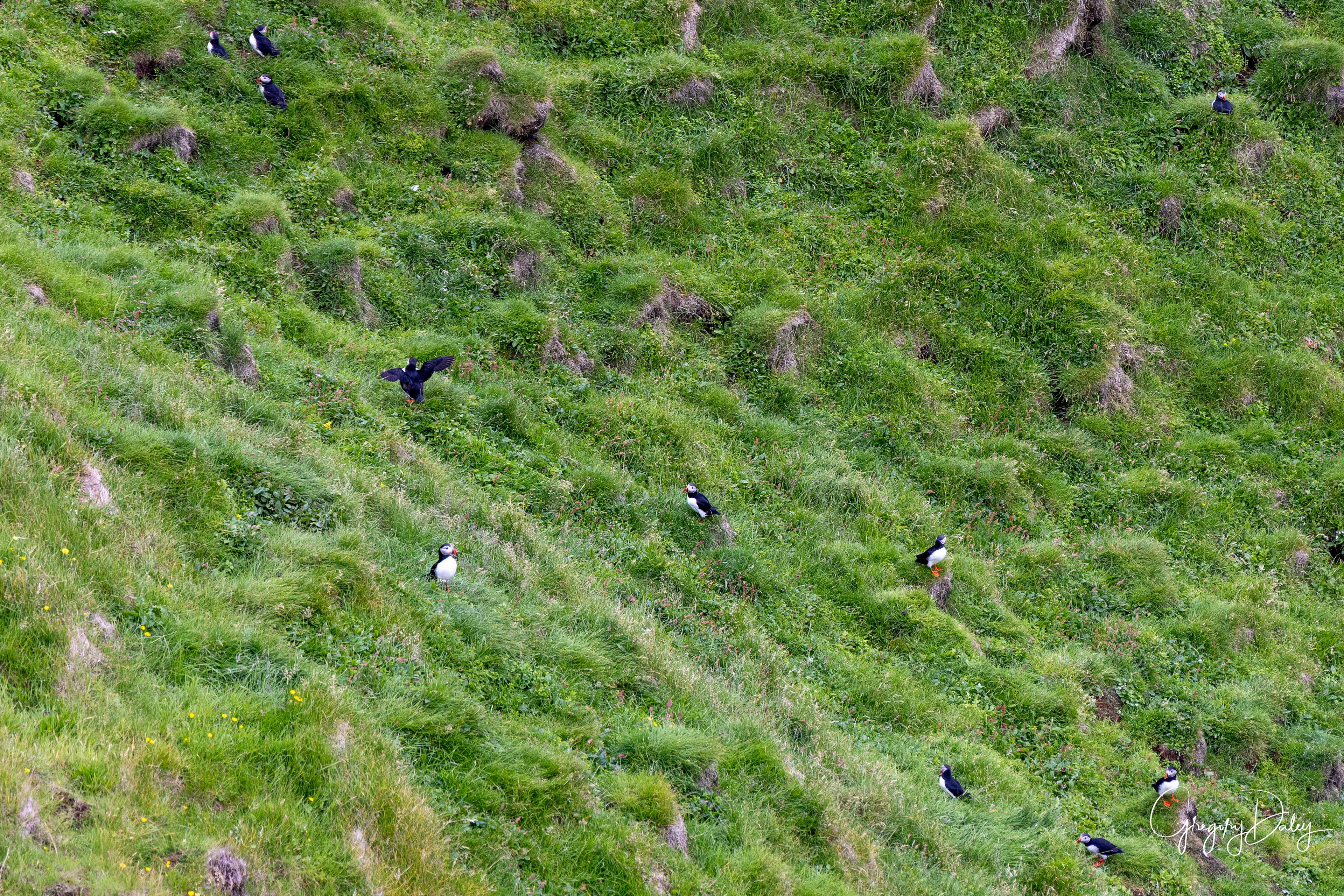


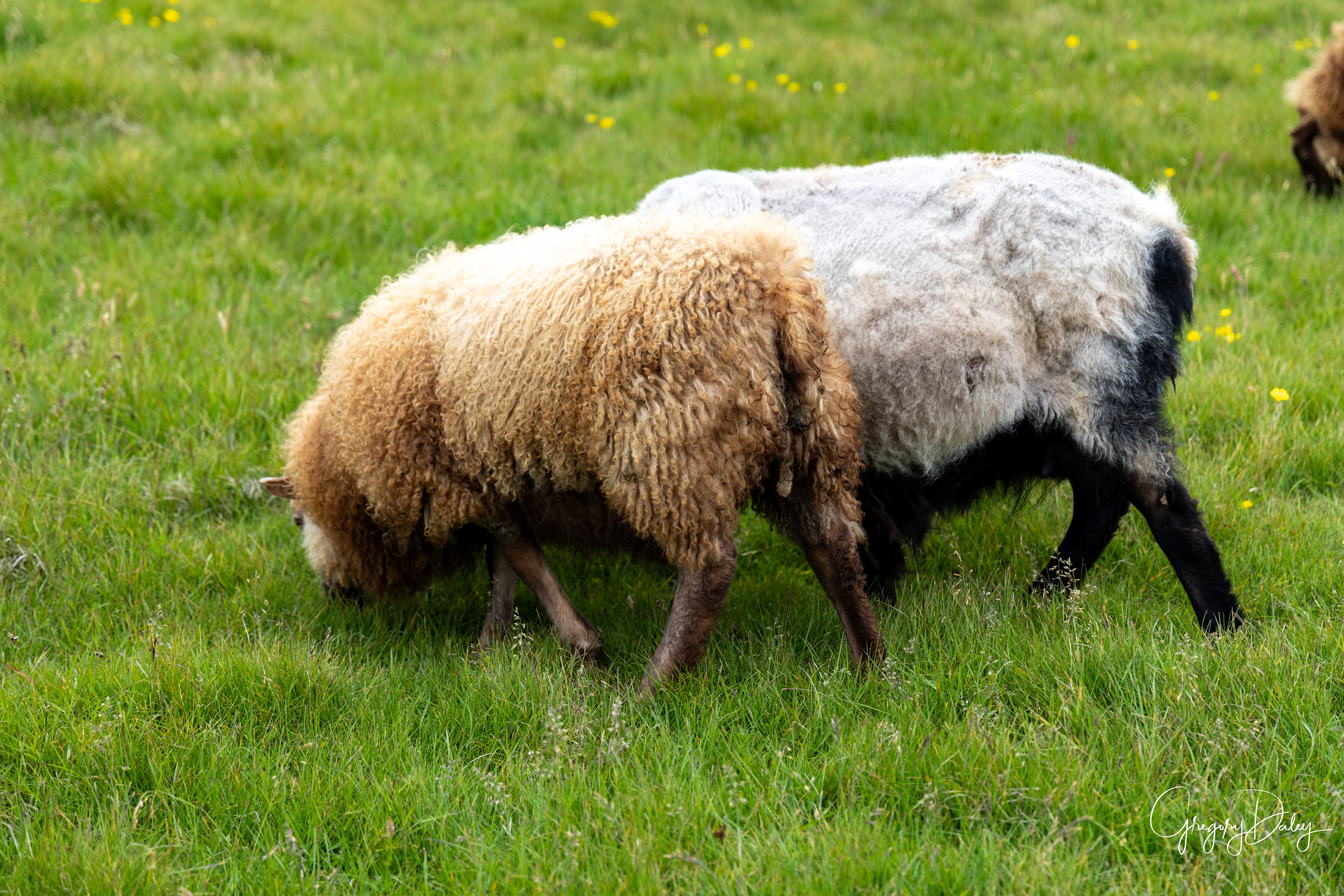
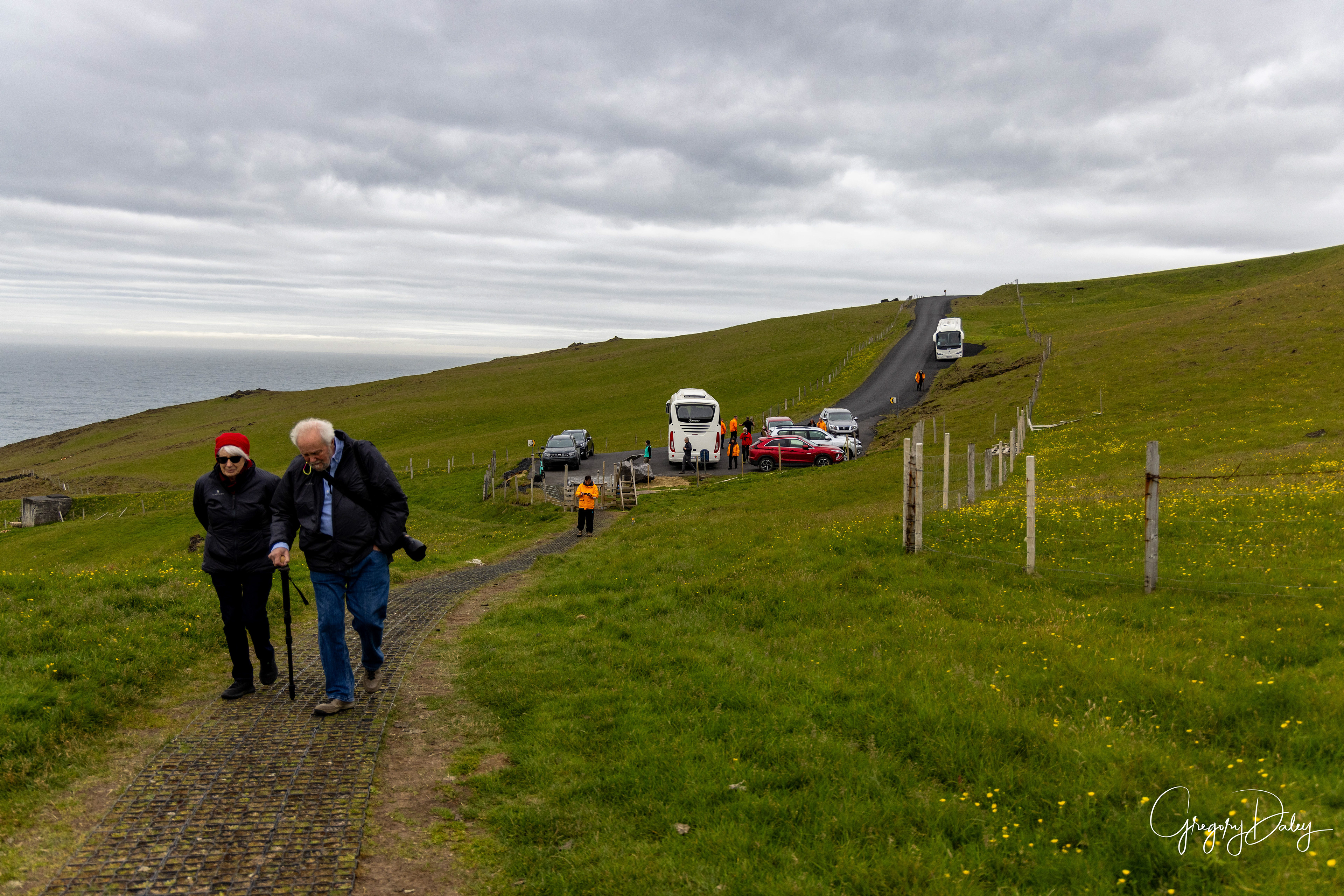
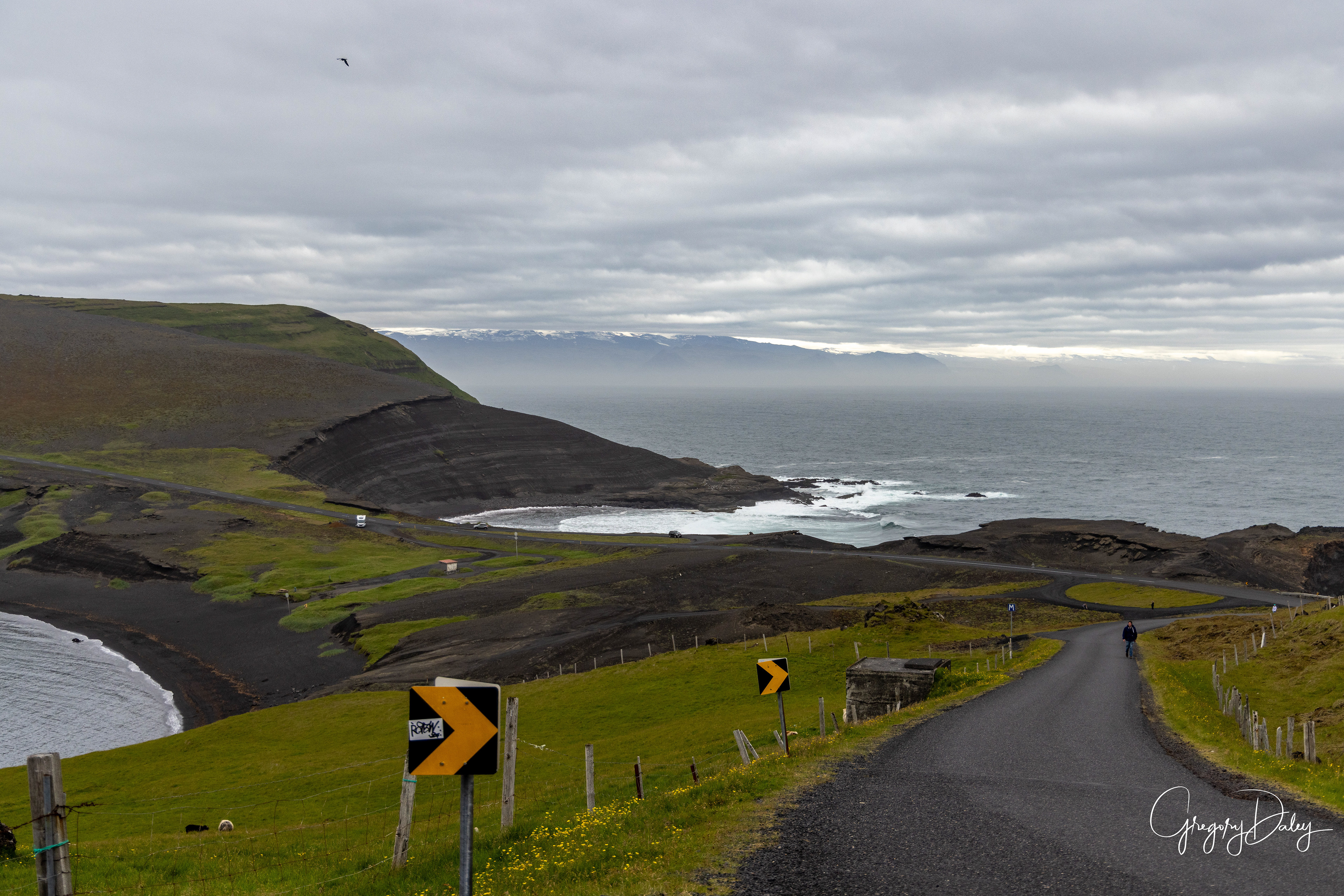
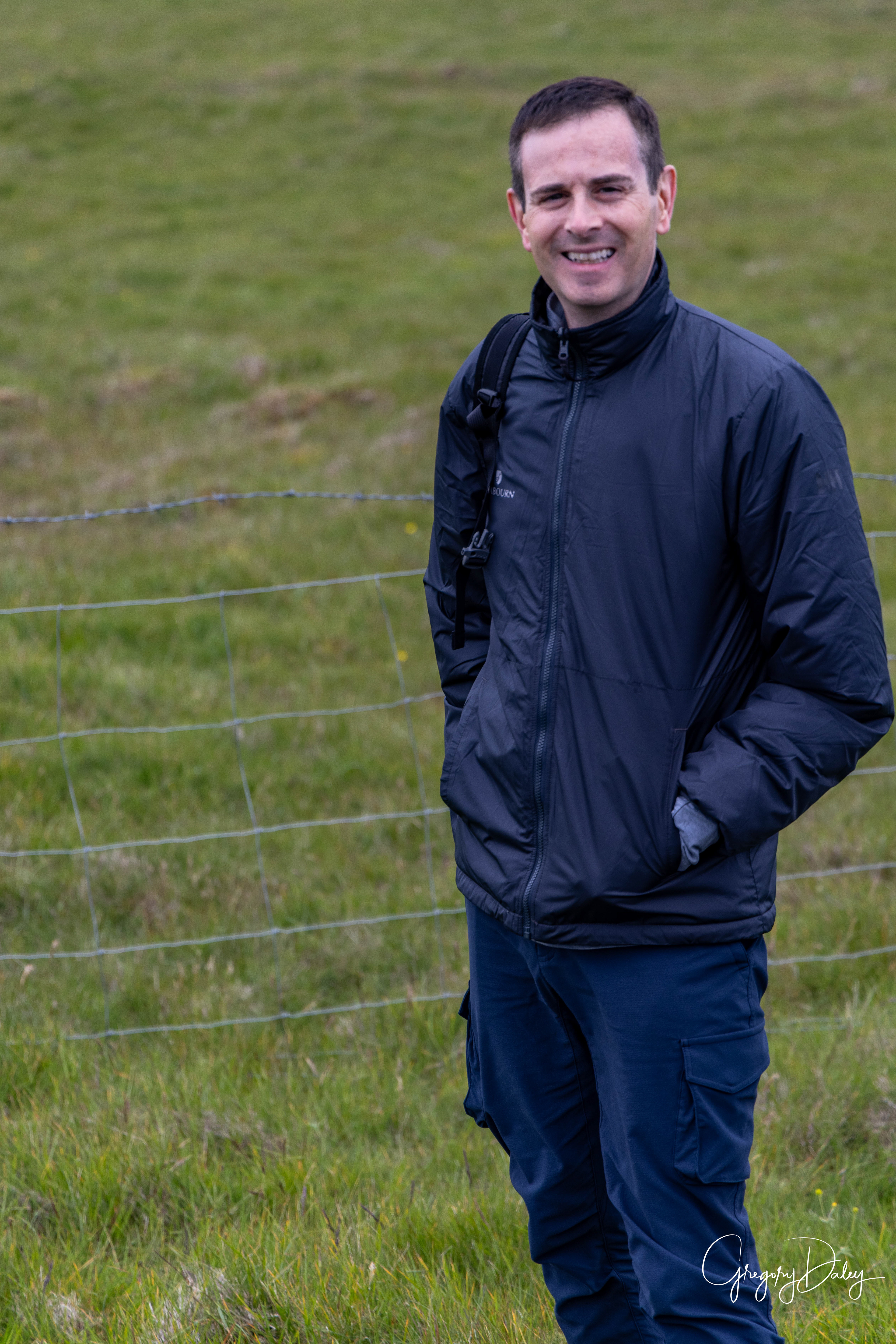
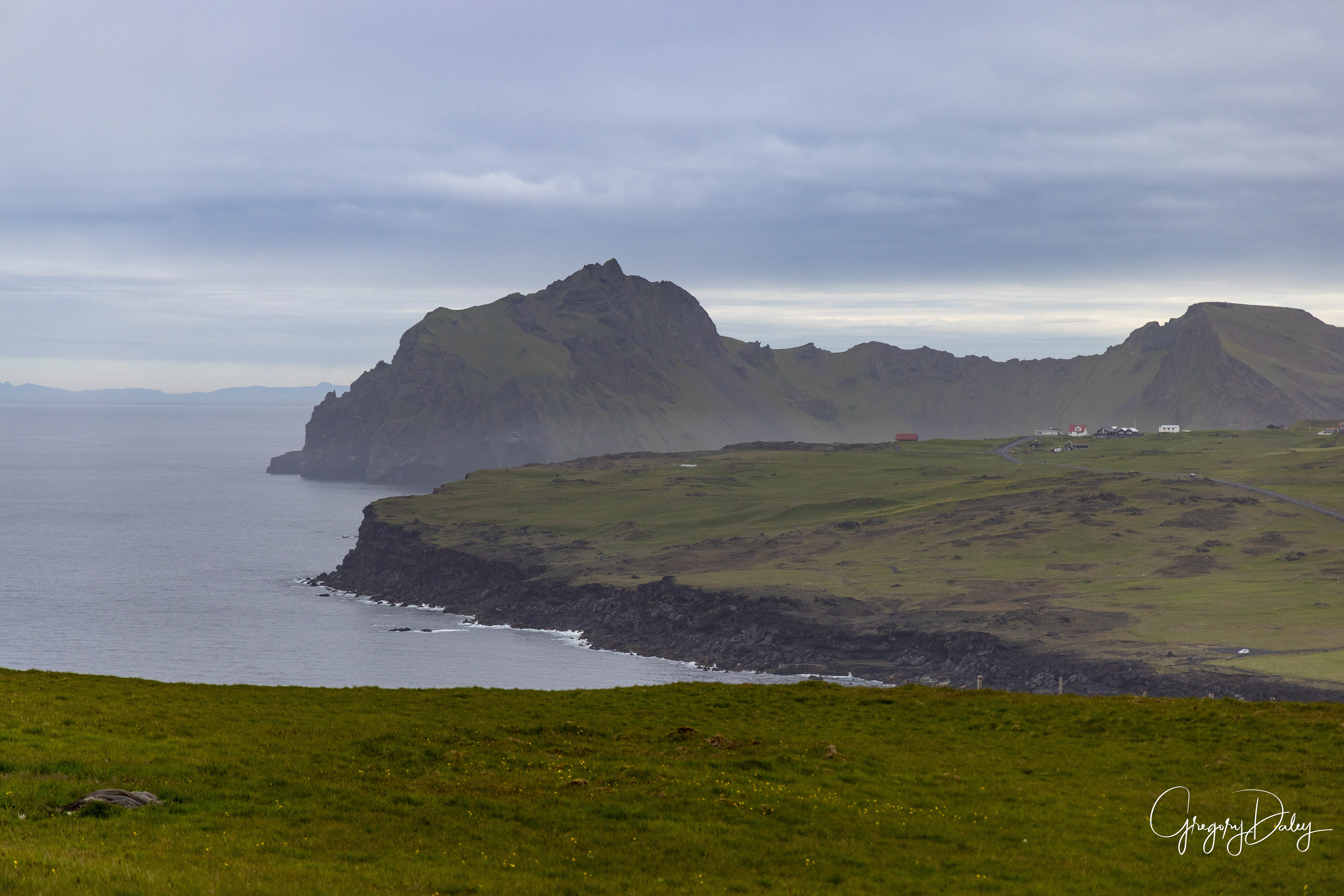

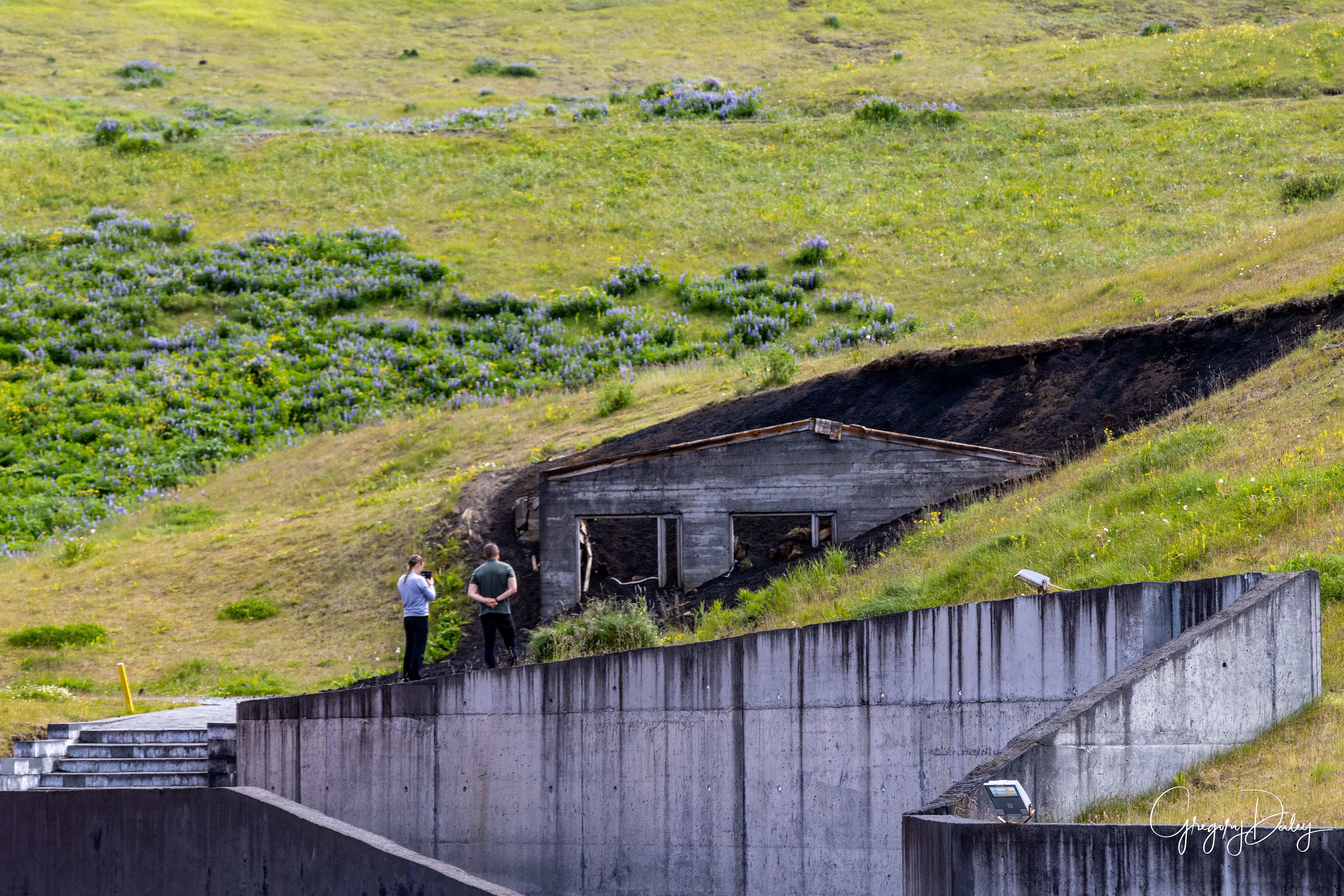


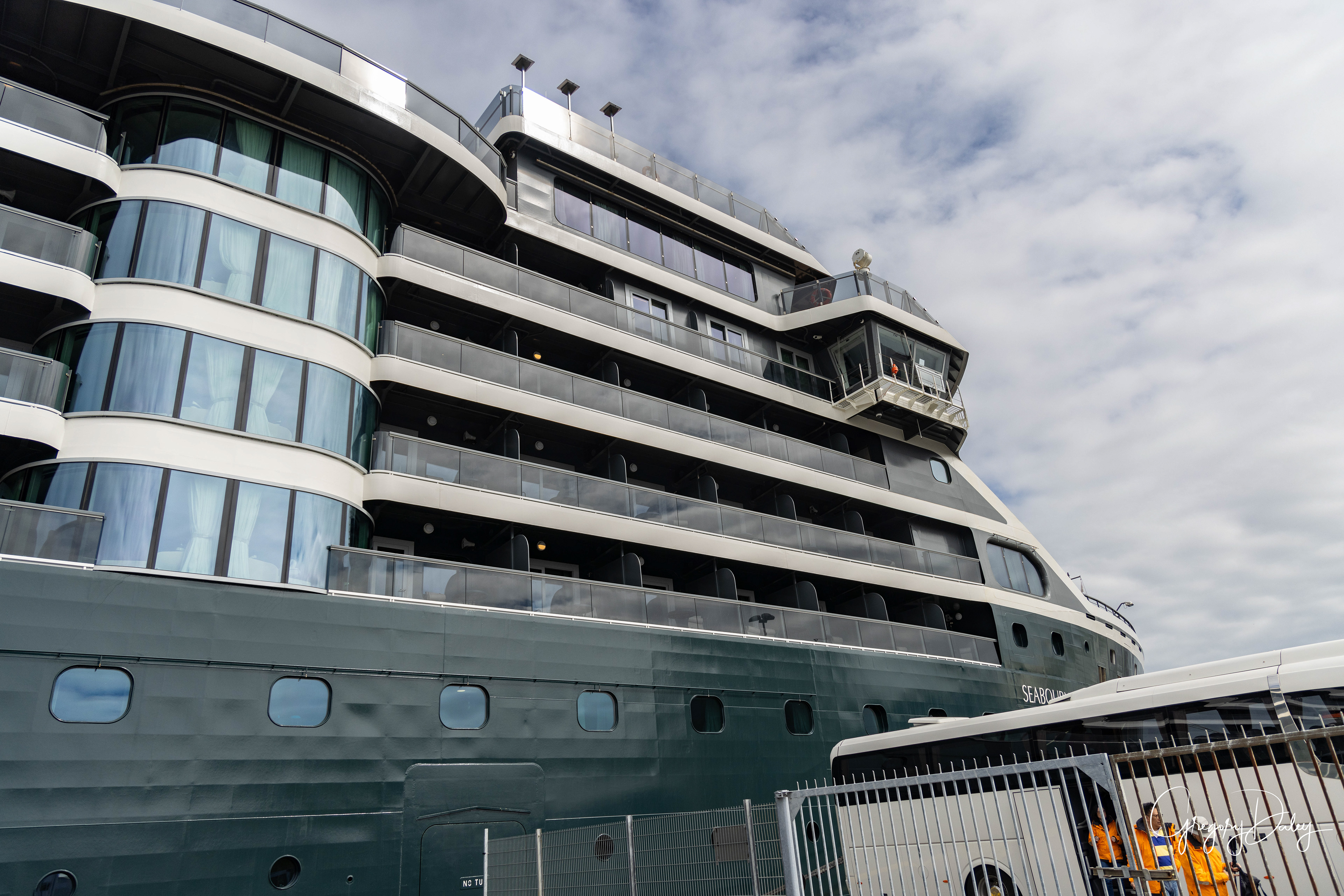
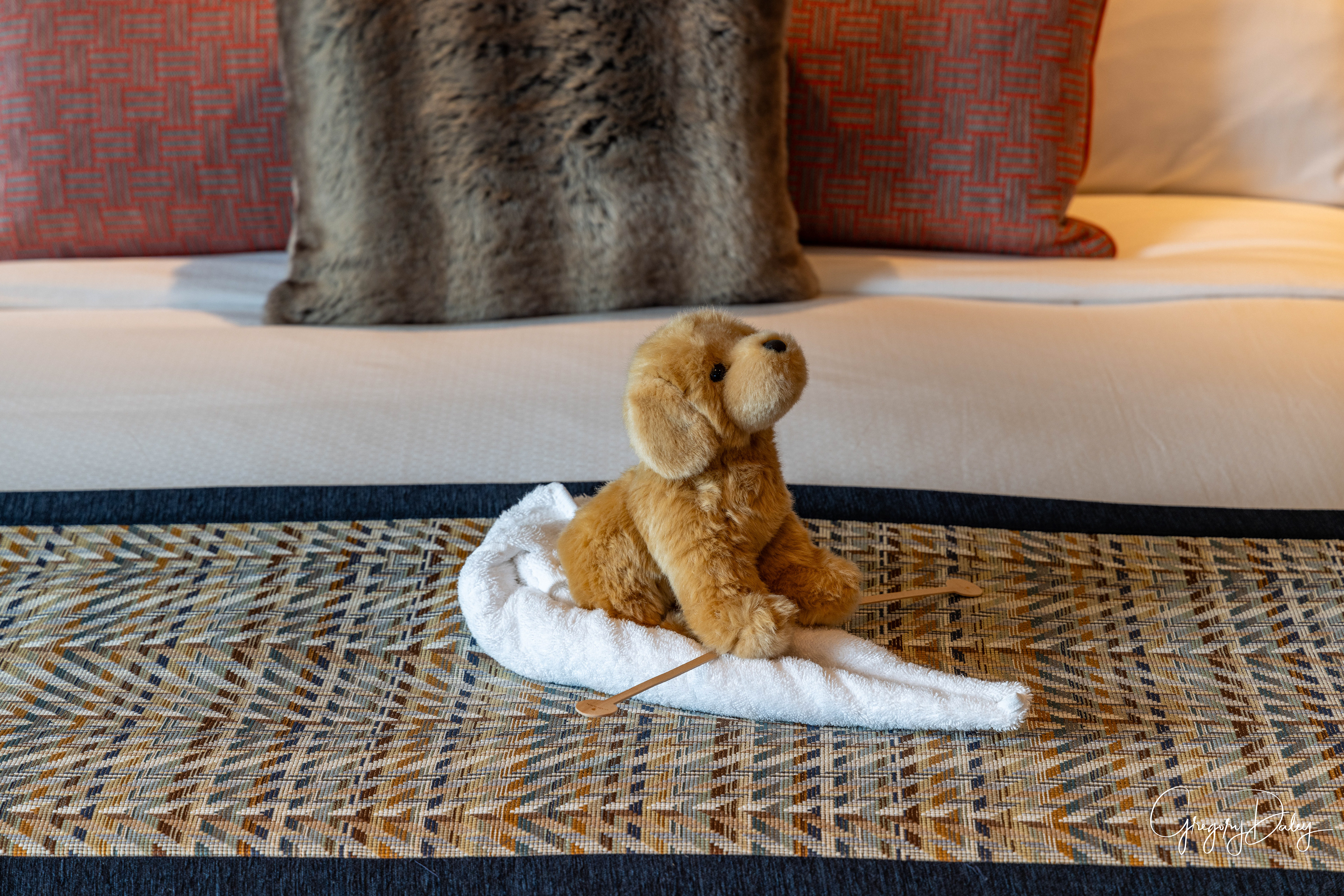


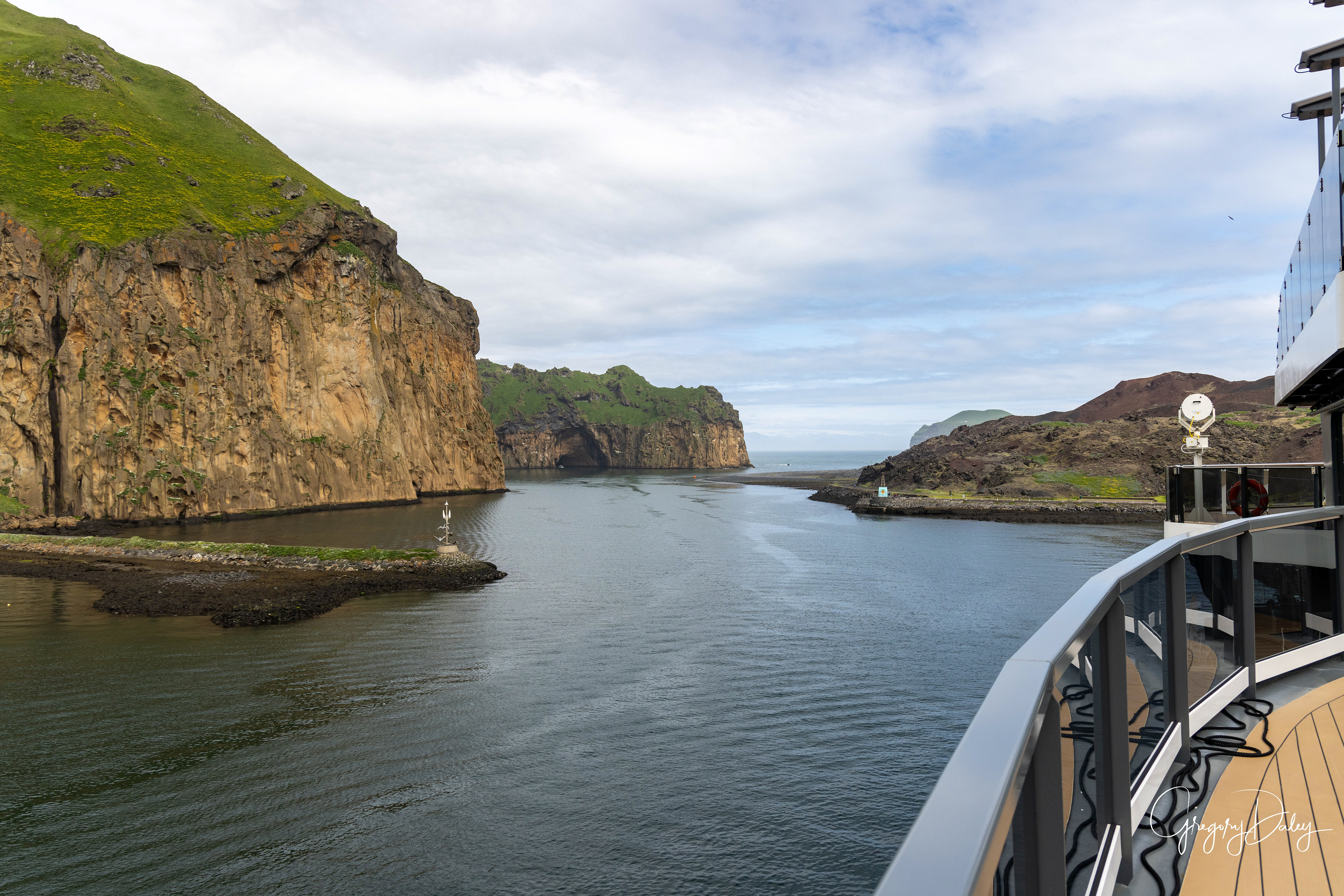
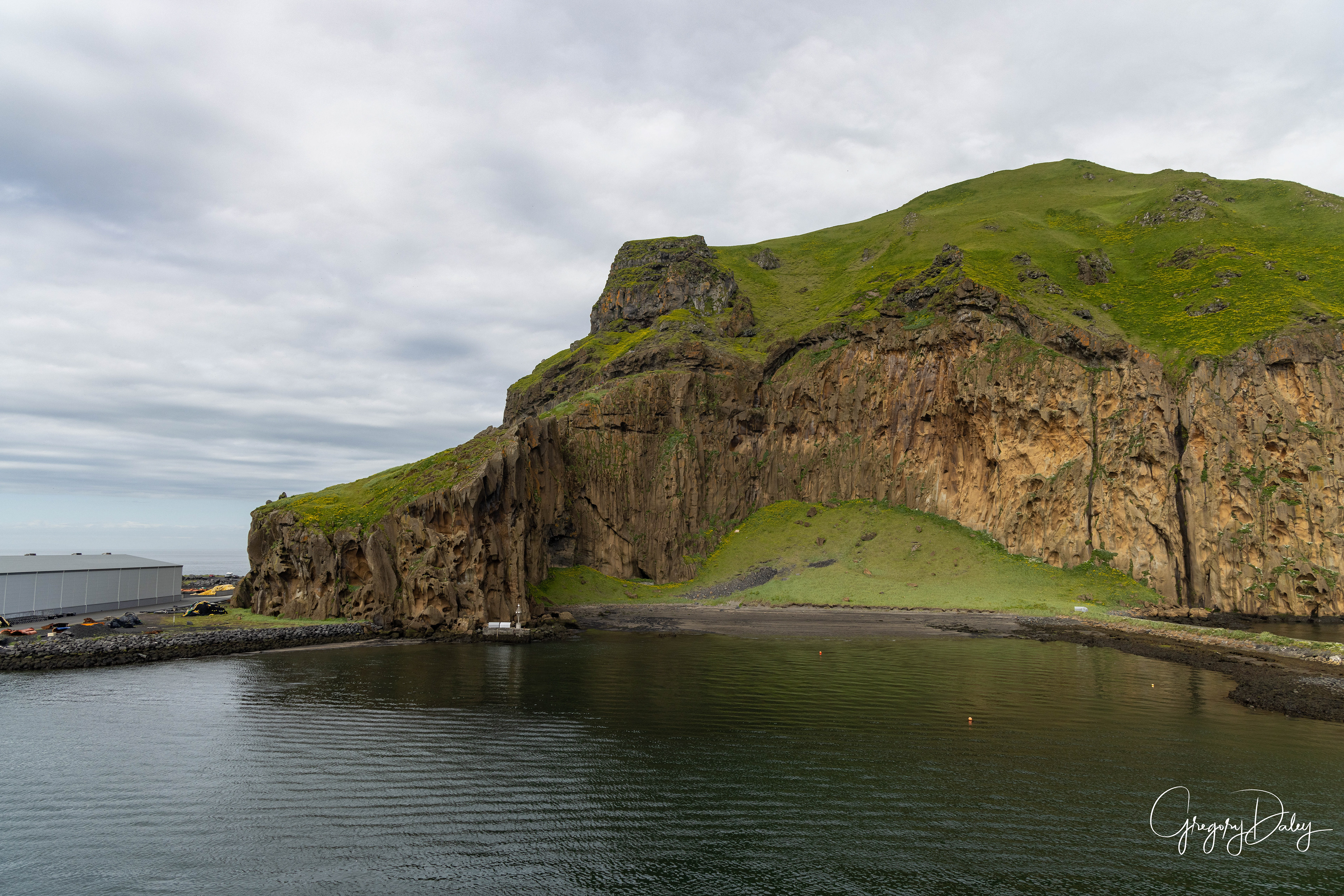

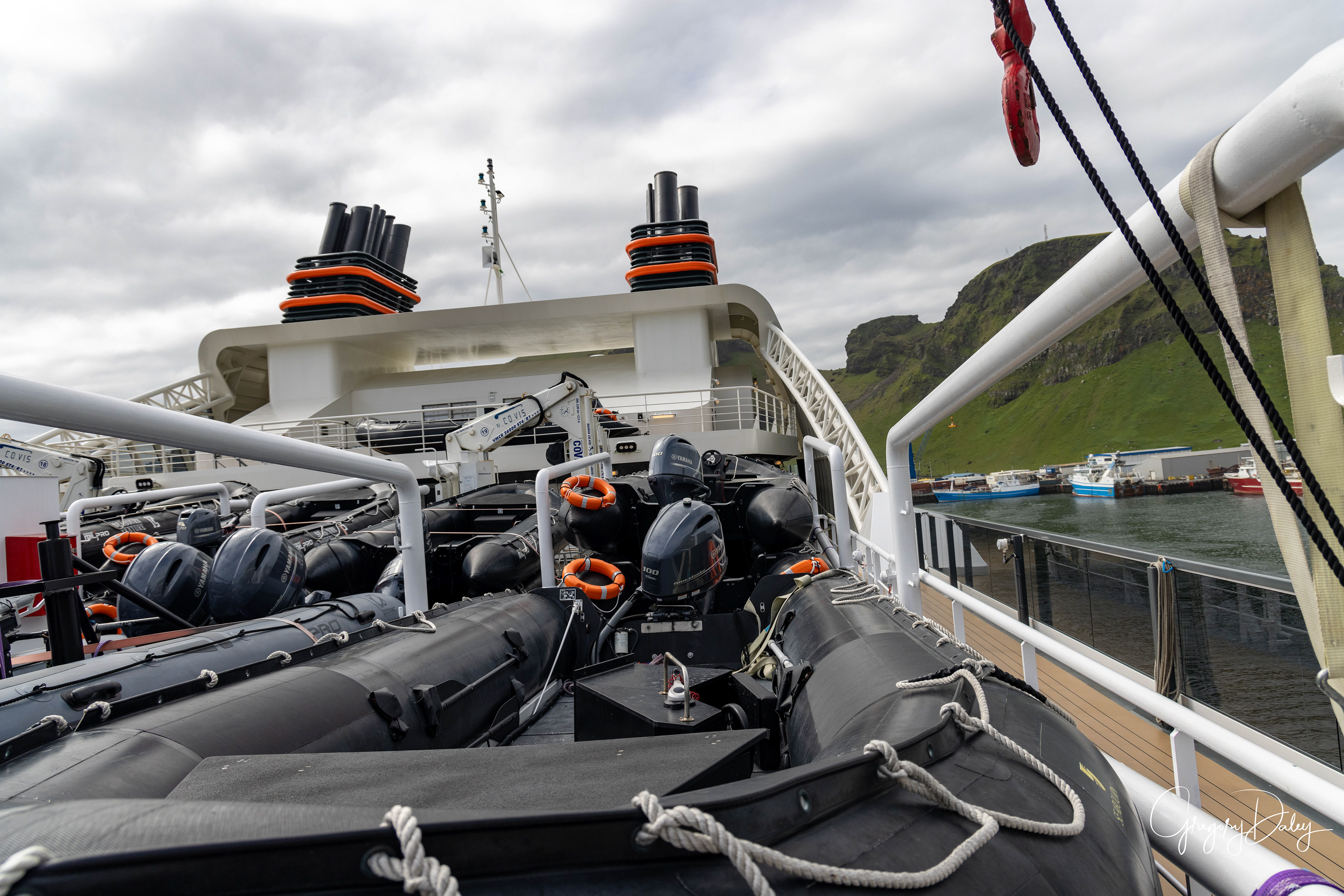






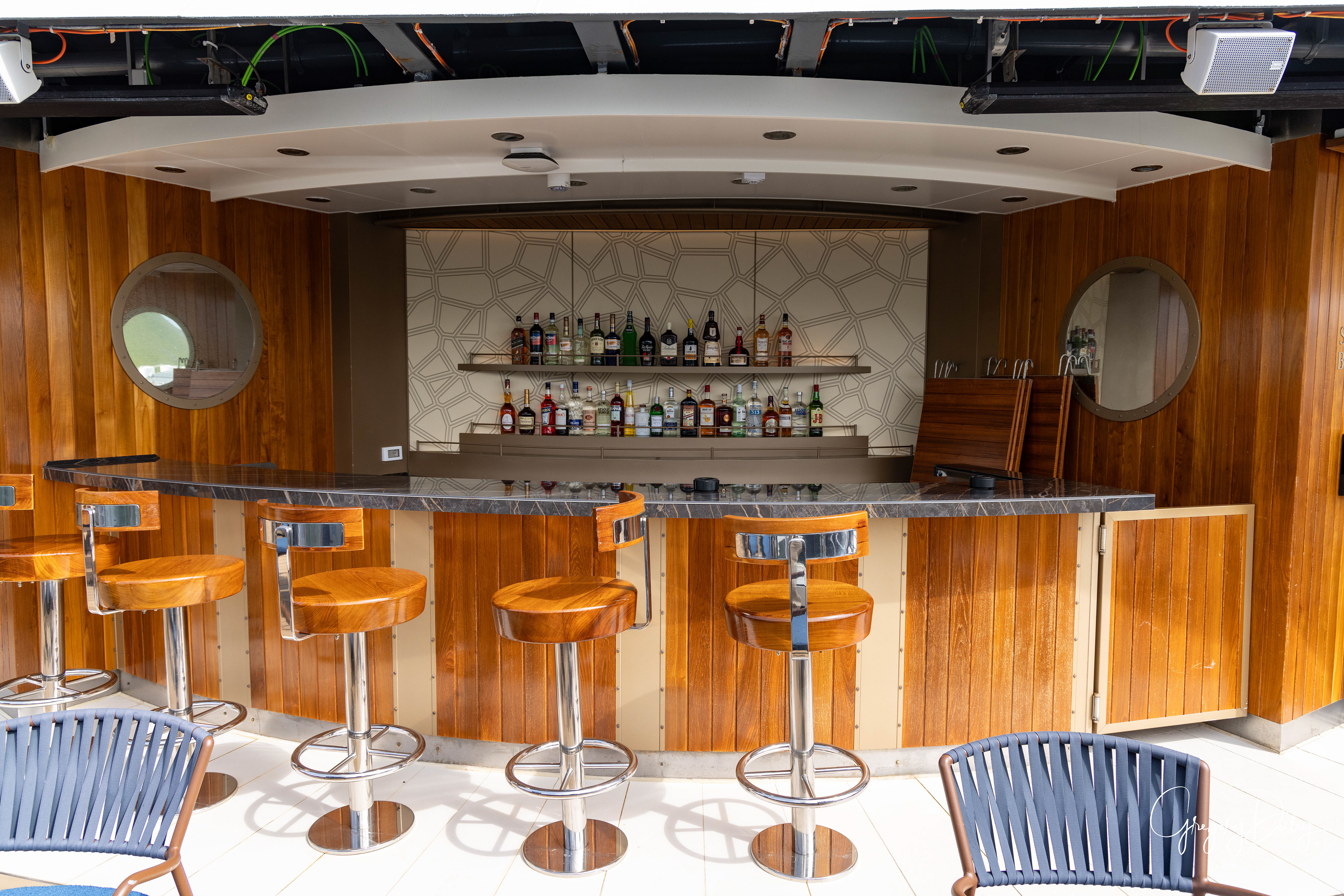
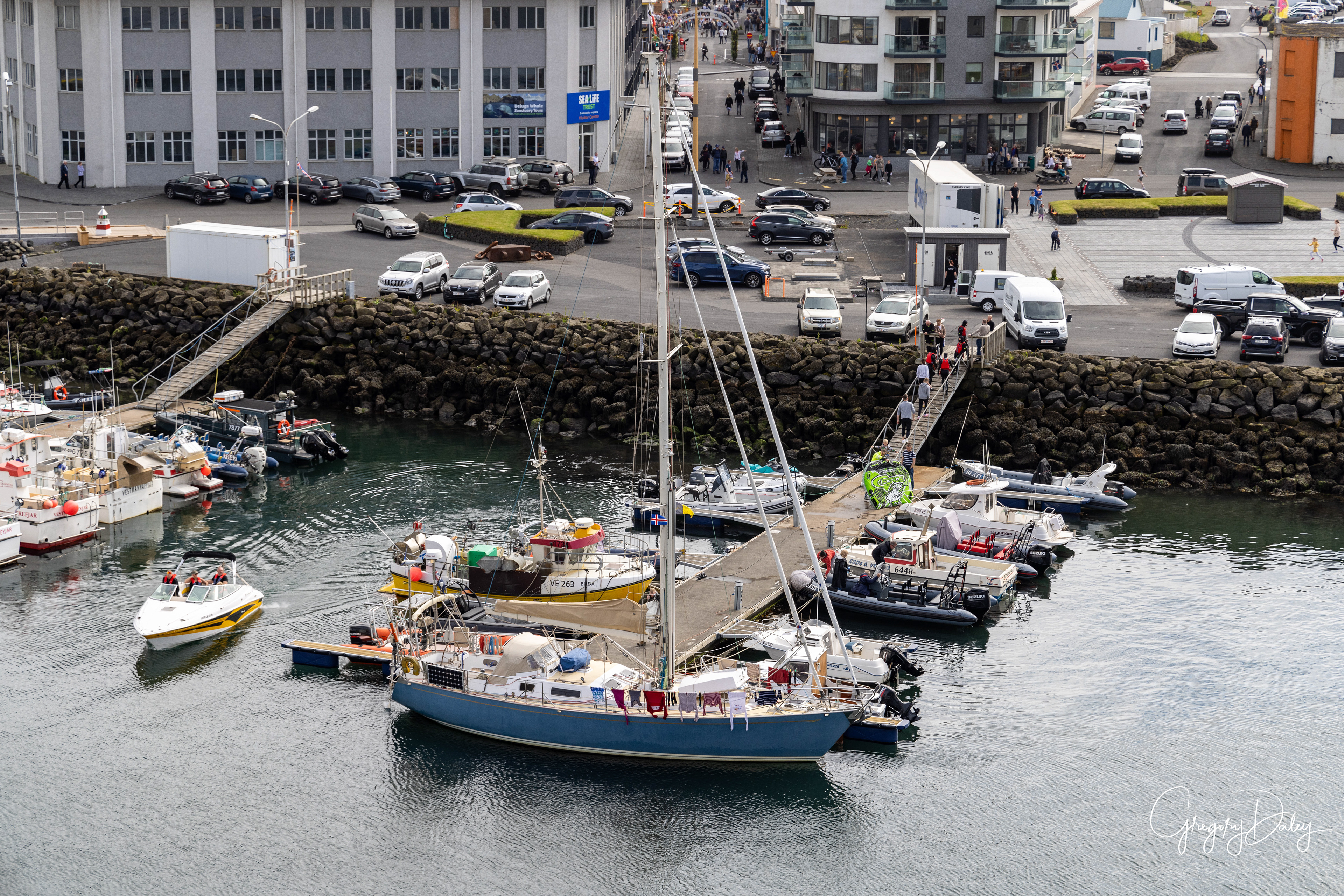
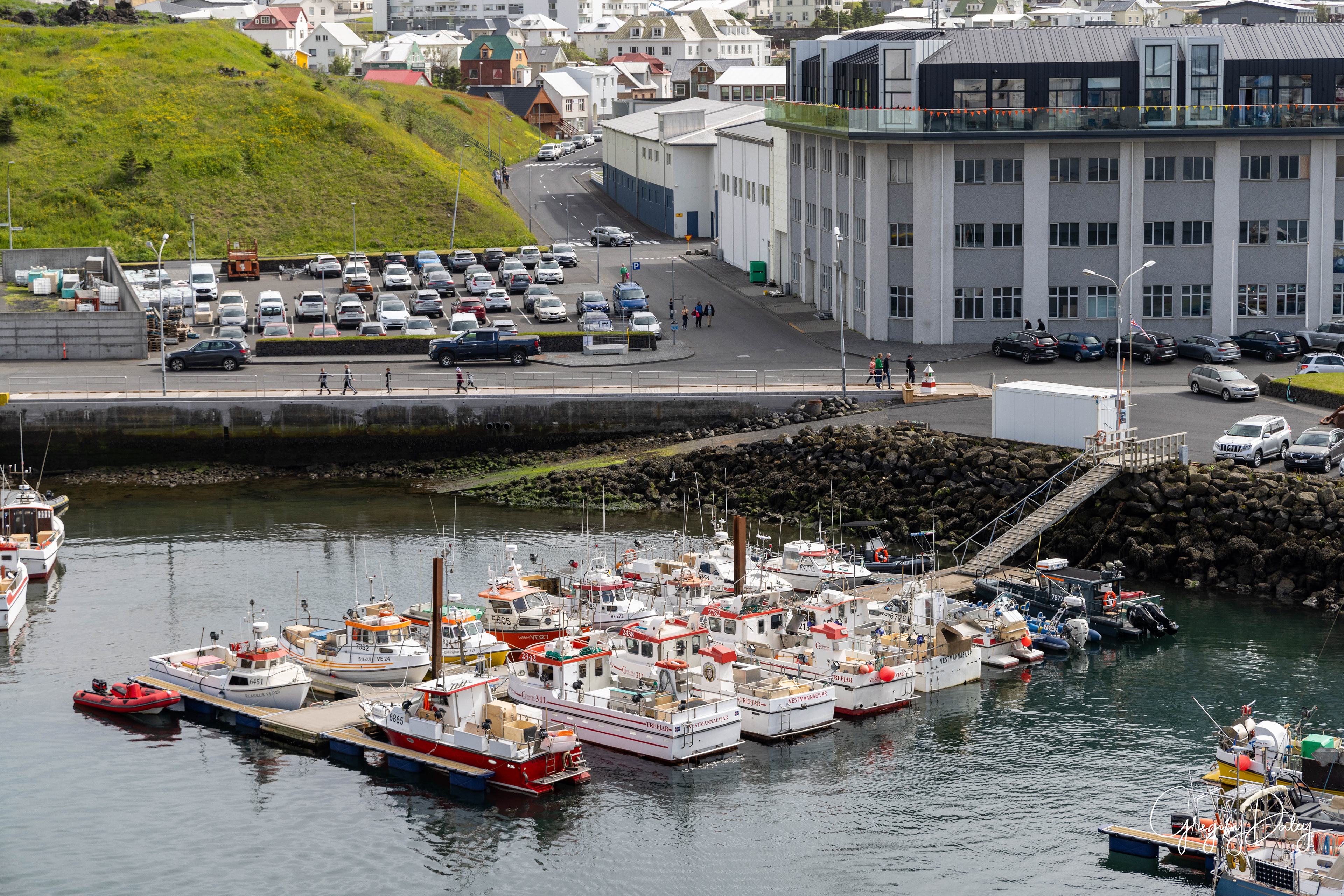



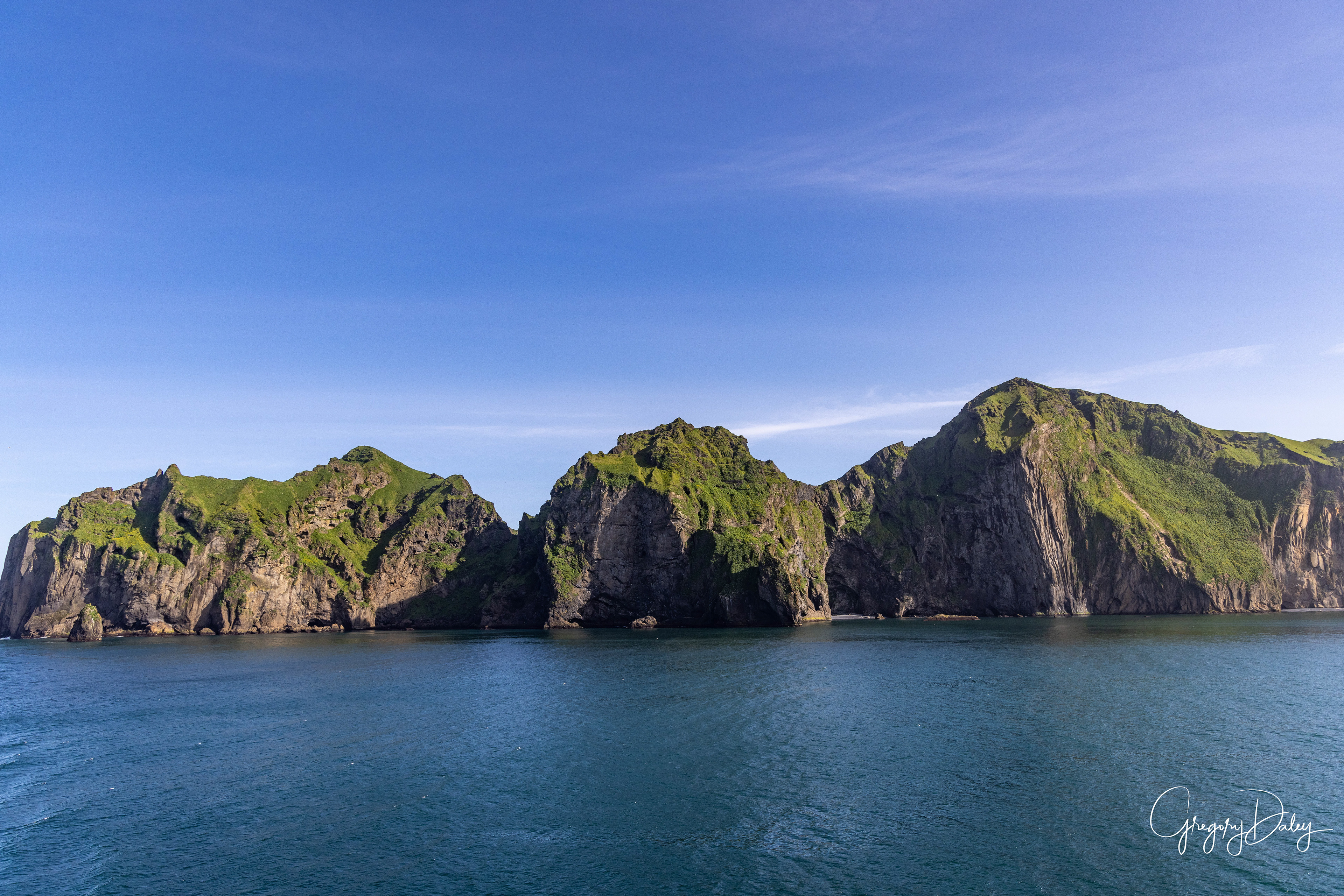


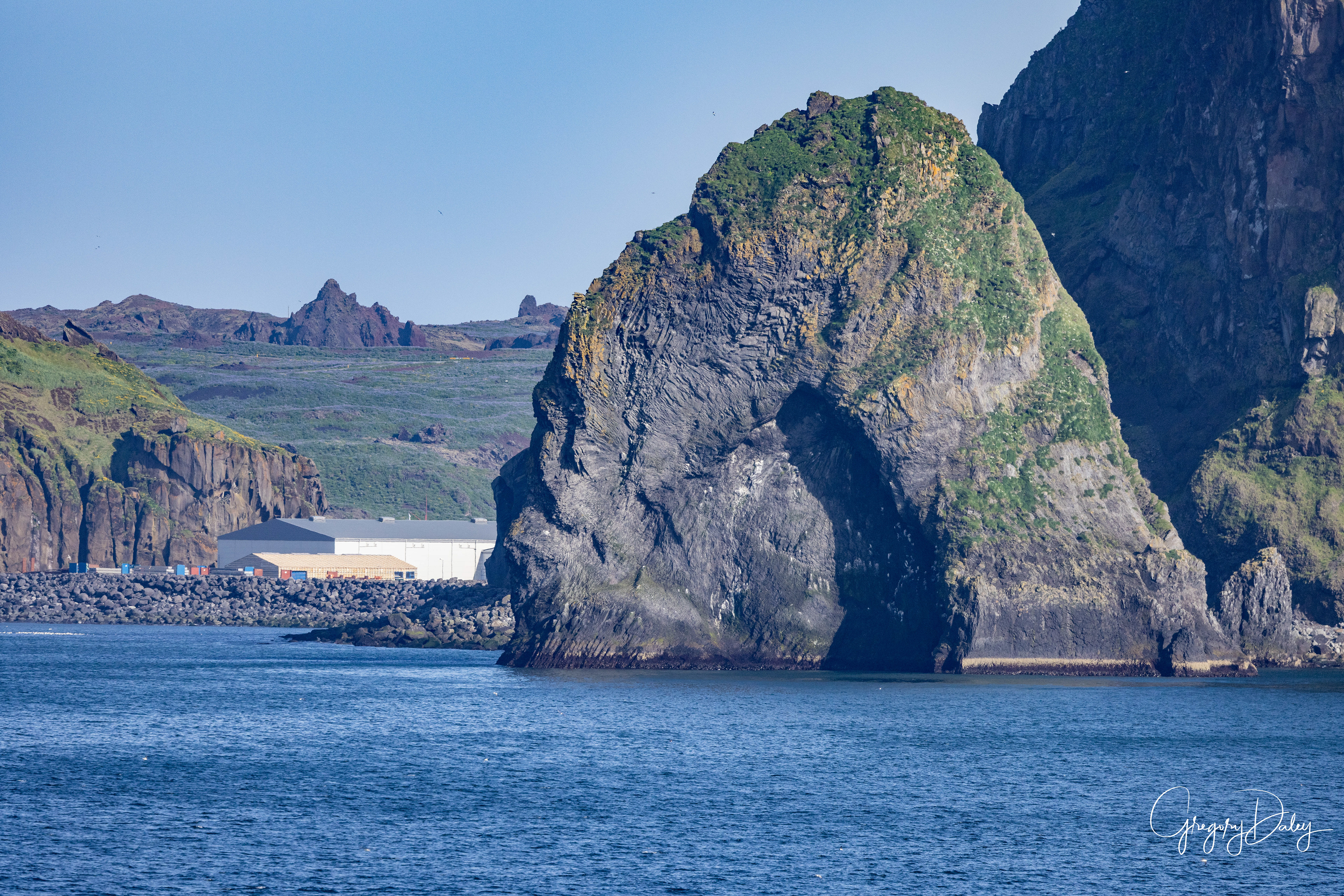



Heimaey, Vestmannaeyjar, Iceland
Saturday, 7/8/23
Latitude: 63.45° Longitude: -20.26°
It was a short day to cover all of Heimaey Island, an Icelandic gem that bore witness to a cataclysmic event 50 years ago. Arriving on the island on the anniversary of this event, we embarked on a poignant exploration, reflecting on the resilience of the local community and the transformative power of nature.
The island greeted all with a serene beauty that belied its tumultuous past. The day began with a bus tour around the island. We admired Atlantic Puffins as they sat outside their burrows before flying off to sea. Later, one would return to the burrow with 8-12 small fishes in its beak to feed it's awaiting puffling. The bus tour ended with a visit to the Eldheimar museum, where we immersed ourselves in the history of the volcanic eruption that had shaped Heimaey's destiny. The exhibits vividly depicted the chaos and destruction that unfolded five decades ago. They also showcased the indomitable spirit of the islanders who rebuilt their lives amidst the ash and debris.
Venturing into the heart of the island, there were hikes through the lava fields, the remnants of the eruption now covered in a vibrant carpet of moss. The juxtaposition of life and destruction was palpable, reminding everyone of the fragile balance between nature's fury and its regenerative power.
Reaching the summit of Eldfell, the volcano responsible for the upheaval, we paused to pay homage to the island's past. The panoramic view from the top served as a testament to the resilience of Heimaey's inhabitants, who turned tragedy into triumph, rebuilding their homes and restoring their community with unwavering determination.
Leaving Heimaey Island, everyone carried with them a profound sense of gratitude for the opportunity to witness the island's rebirth firsthand. It was a day of remembrance, celebrating the human spirit's capacity to overcome adversity and find strength in the face of unimaginable challenges. As the sun began its descent, Seabourn Venture began its voyage across the Denmark Strait, heading towards Greenland, the largest glacier-covered island in the world.
Heimaey, Westman Islands, Iceland
Heimaey Island is the largest in the Westman Islands located four miles off the south-west coast of Iceland. One of the most visually impressive islands in Iceland, it is ringed by tall, vertical sea cliffs many hundreds of feet high. Heimaey is also the home to over eight million Atlantic puffins, more nesting puffins than anywhere else on earth. A local story tells that puffin chicks, taking their first flights at night, often become stranded in the village streets, where the local children rescue them and set them free the next day.
In January of 1973 the island received the nickname, ‘Pompeii of the North’ when a volcanic eruption and lava flow destroyed half the town. This caused a crisis when the town’s only harbor was nearly blocked by advancing lava. Nowadays it is a lively place with a vibrant culture and over four thousand residents. Archaeological excavations suggest that people lived in Heimaey as early as the 10th Century.
First settlers
In tradition, Herjólfur Bárðarson was said to be the first person to settle in Heimaey. According to the Landnáma, he built his farm in Herjólfsdalur (literally: Herjólf's valley) about 900. The archaeological excavation in 1971 of ancient ruins in Herjólfsdalur revealed that there had been a settlement nearly 100 years earlier.
Turkish Raid
In 1627, three Arab pirate ships from the Ottoman-controlled Barbary Coast raided several towns on the south coast of Iceland and outlying islands. They attacked Grindavík and Heimaey. In Grindavík, townspeople could flee into the lava field of Reykjanes and hide indefinitely. Heimaey was so isolated that it was vulnerable, and people suffered. Many heroic stories were told of the people who survived the invasion, most notably Guðríður Símonardóttir. Better known as Tyrkja-Gudda (Turkish-Gudda), she was taken by the pirates from her home at Stakkagerði on Heimaey to the slave market in Algeria. From there she bought her way back to Iceland through Tunisia, Italy, and Denmark—Iceland was then under Danish rule. Upon returning to Iceland, she married the poet Hallgrímur Pétursson. The Hallgrímskirkja Lutheran church in Reykjavík is named in his honor.
Eldfell
At 01:00 on 23 January 1973, a volcanic eruption of the mountain Eldfell began on Heimaey. The ground on Heimaey started to quake and fissures formed. The fissures grew to 5,200 feet in length, and lava began to erupt. Lava sprayed into the air from the fissures. Volcanic ash was blown to the sea. Later, the situation deteriorated. When the fissures closed, the eruption converted to a concentrated lava flow that headed toward the harbor. The winds changed, and five million cubic feet of ash blew on the town. During the night, the 5,000 inhabitants of the island were evacuated, mostly by fishing boats, as almost the entire fishing fleet was in dock.
The encroaching lava flow threatened to destroy the harbor. The eruption lasted until 3 July. Icelanders sprayed the lava with six million tons of cold seawater, causing some to solidify and much to be diverted, thus saving the harbor. During the eruption, half of the town was crushed and the island expanded in length. The eruption increased the area of Heimaey from 4.3 sq mi to 5.19 sq mi. Only one man died in the eruption. The eruption is described by John McPhee in his book The Control of Nature.